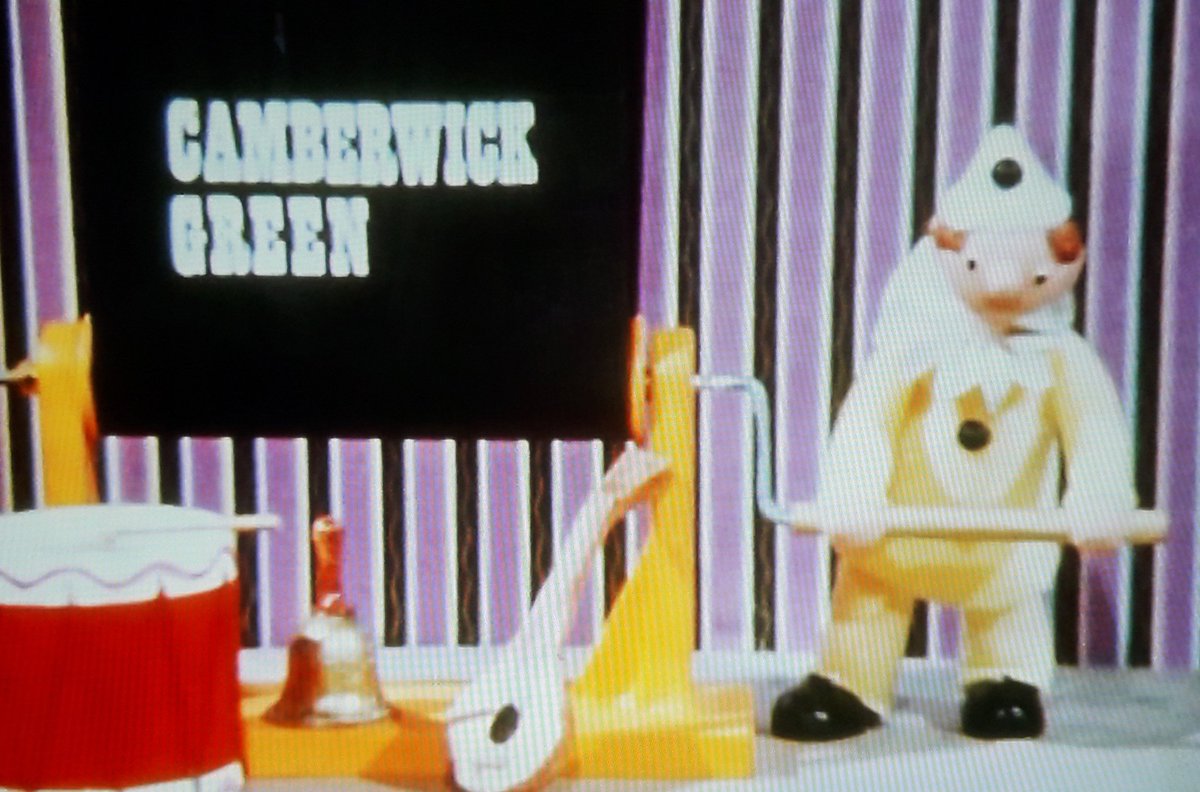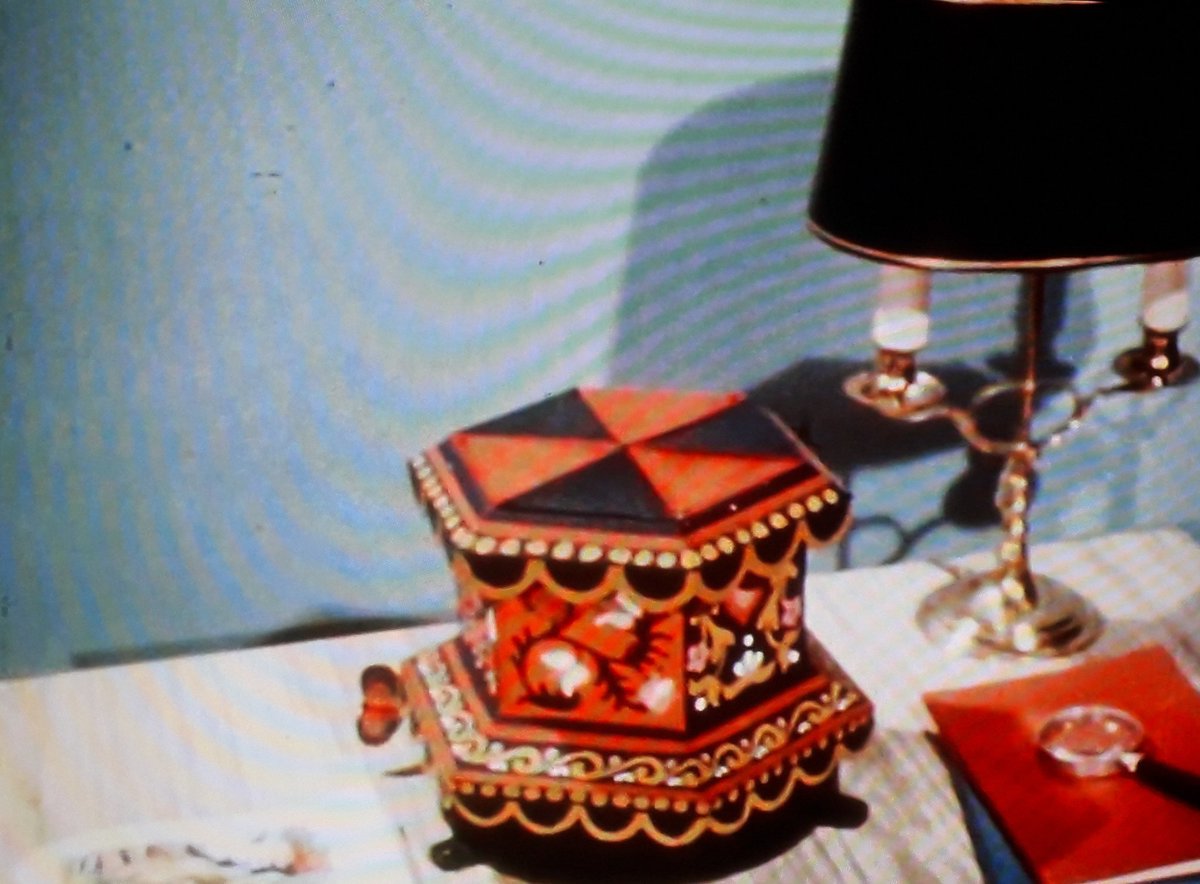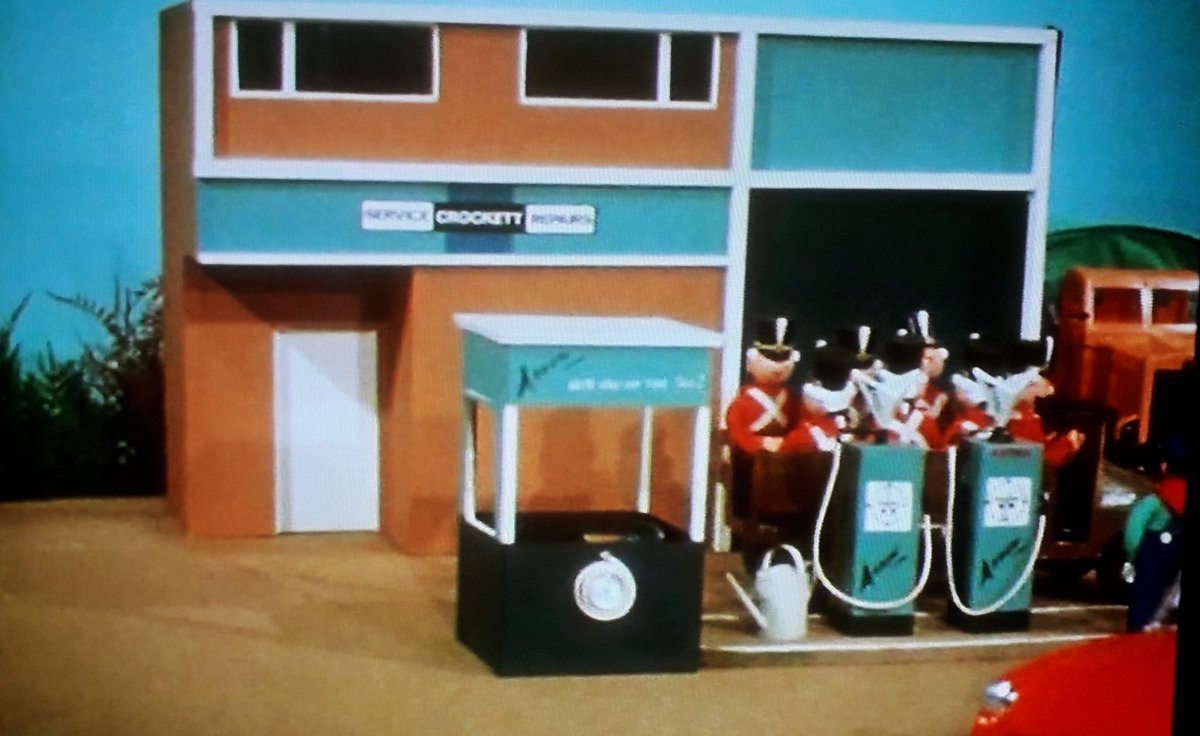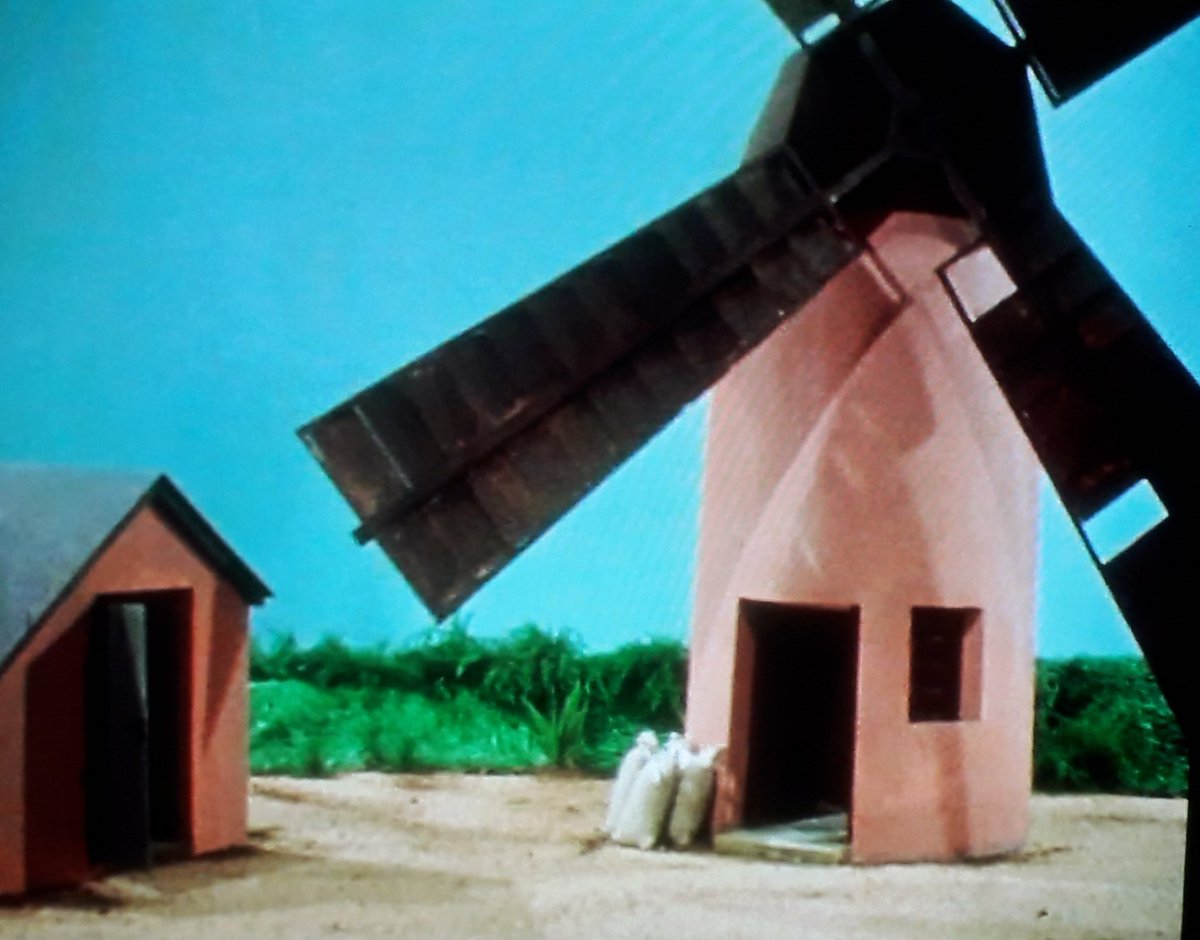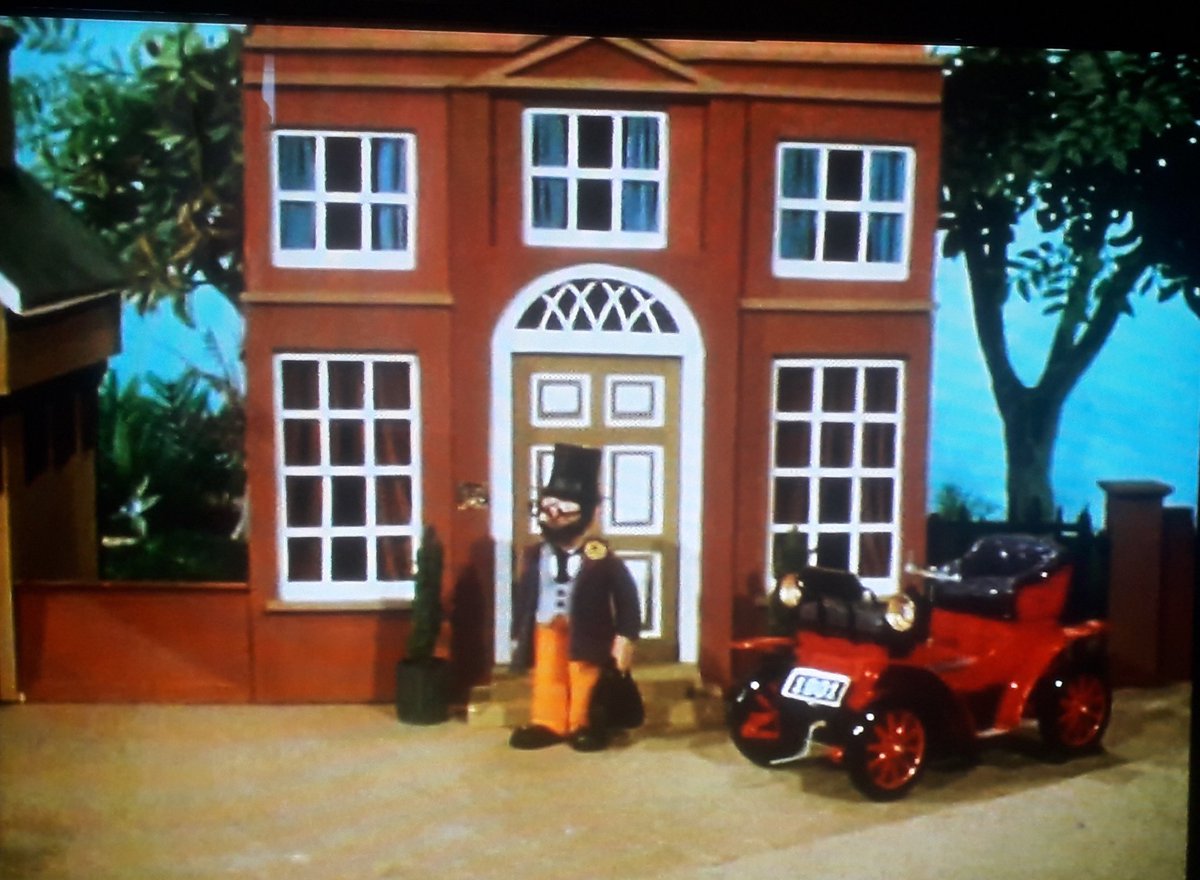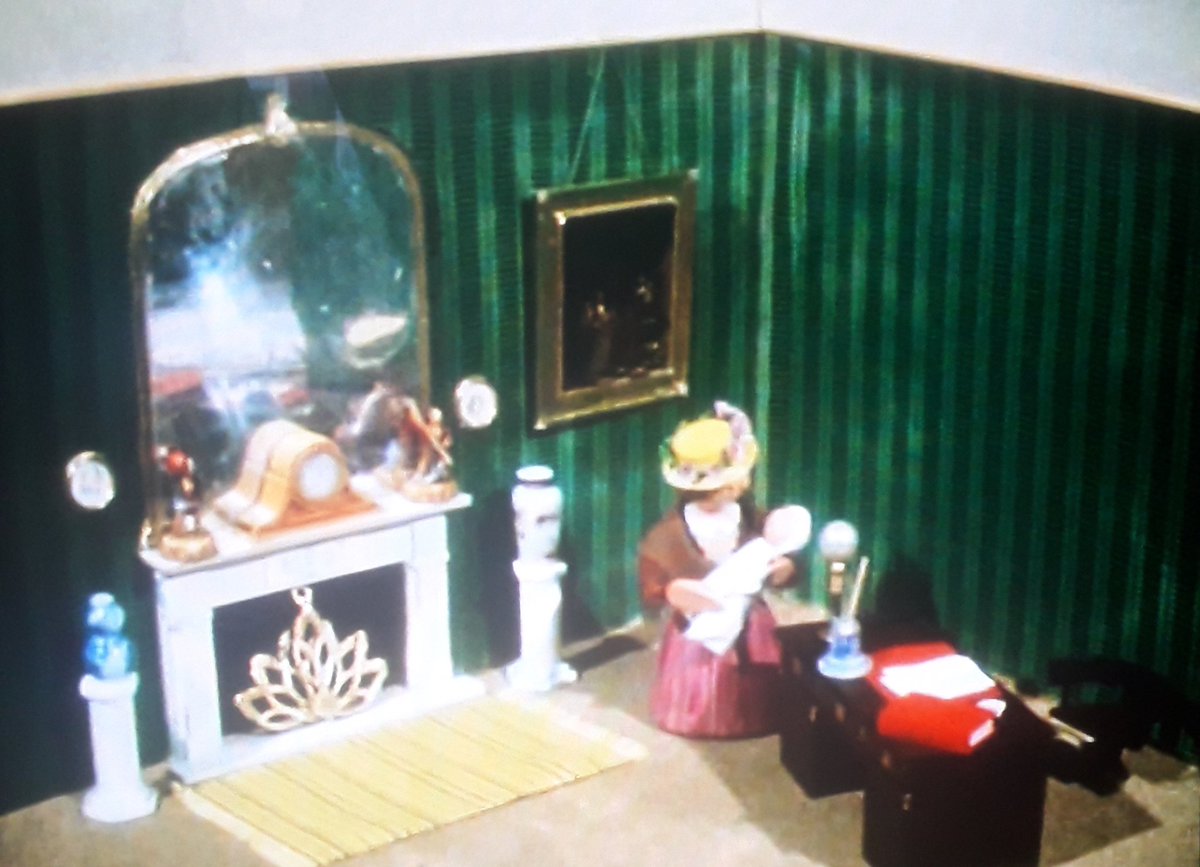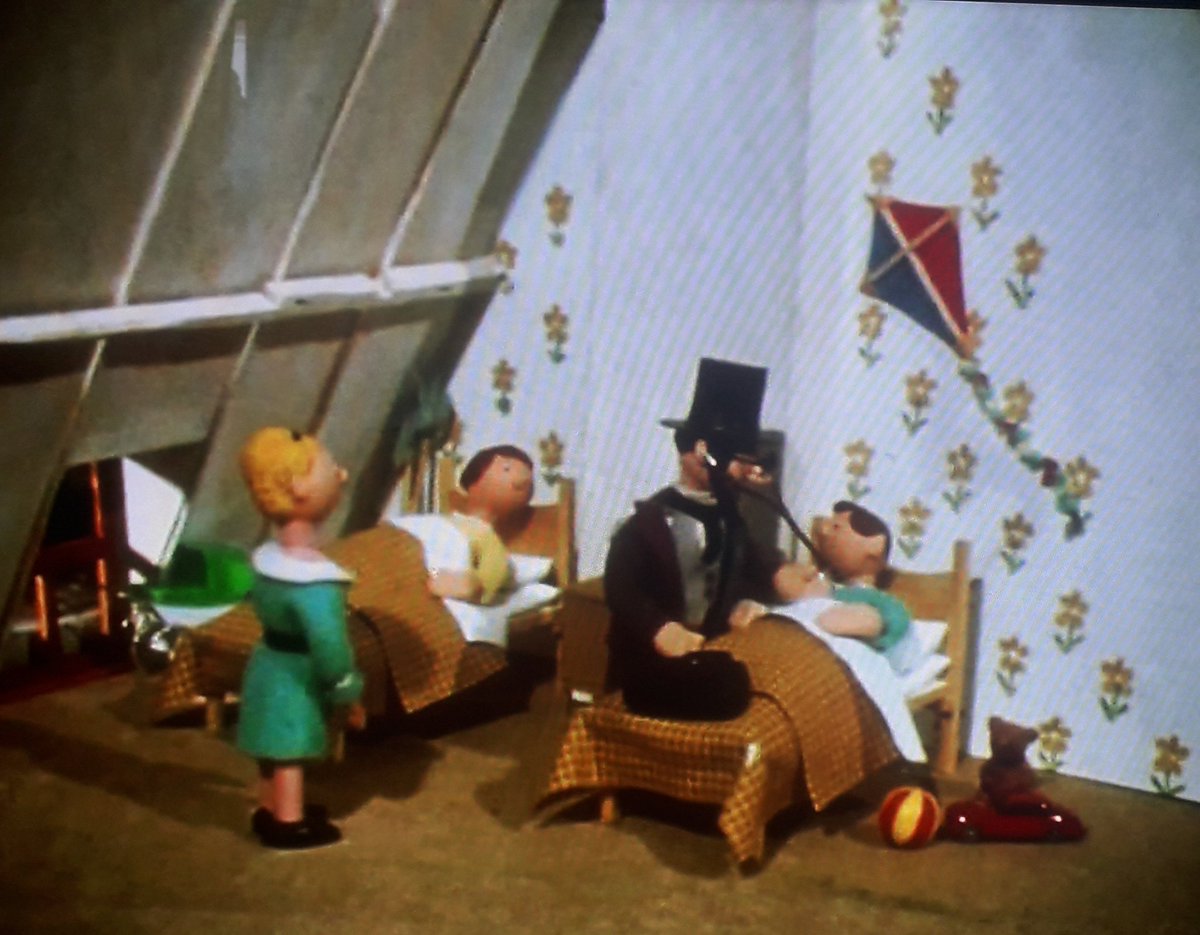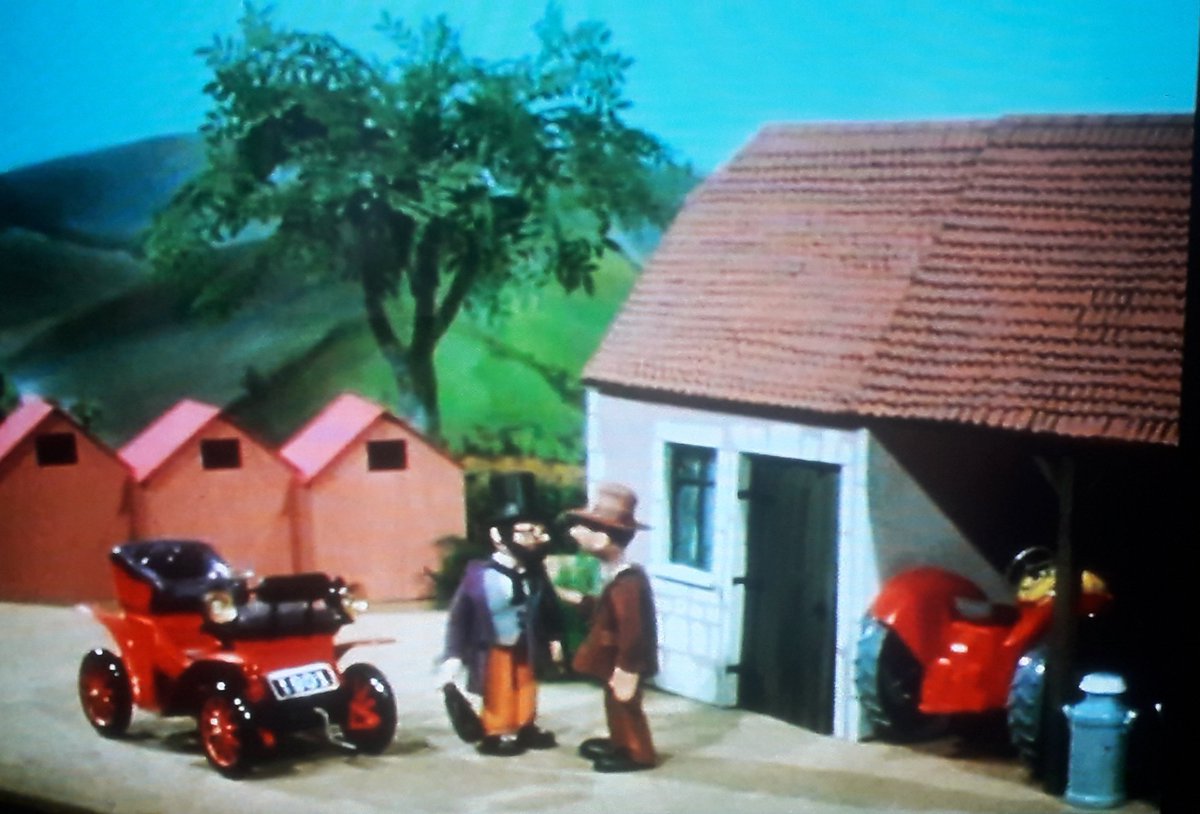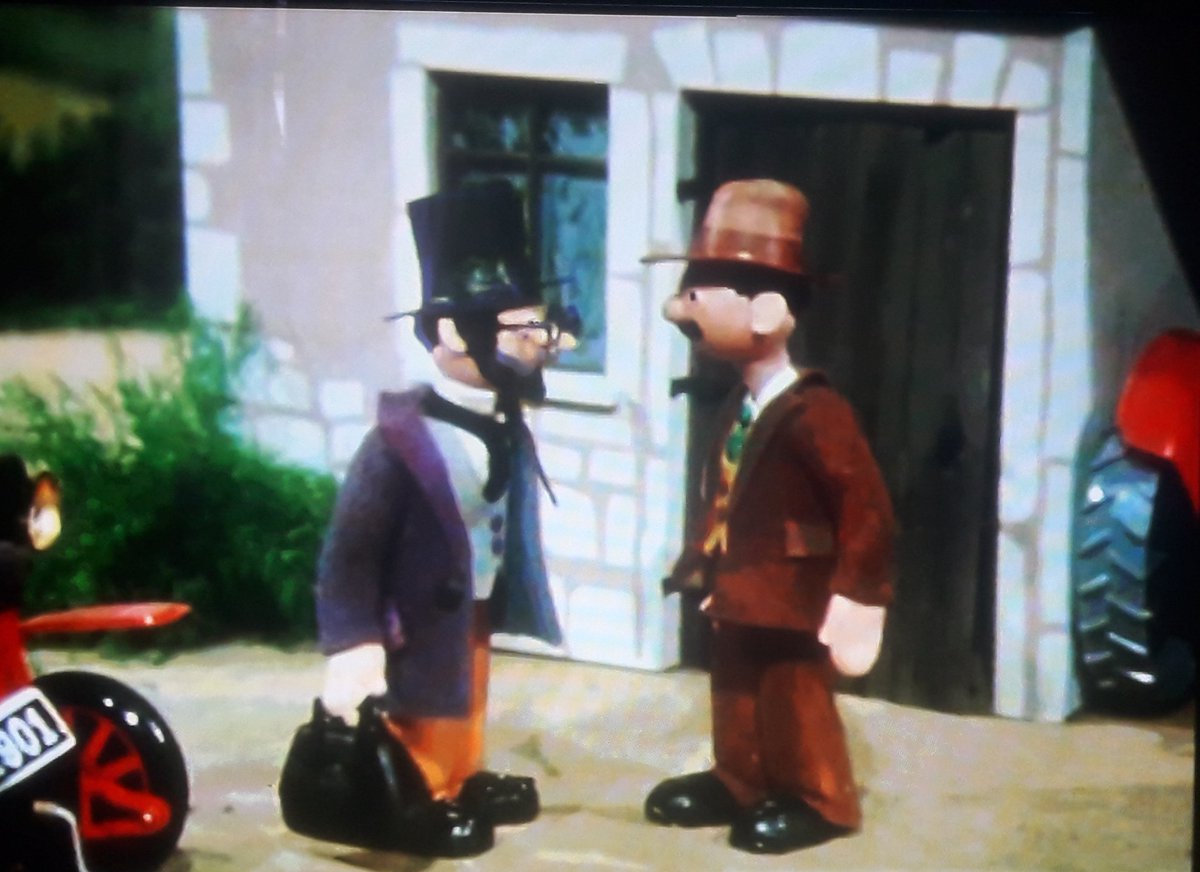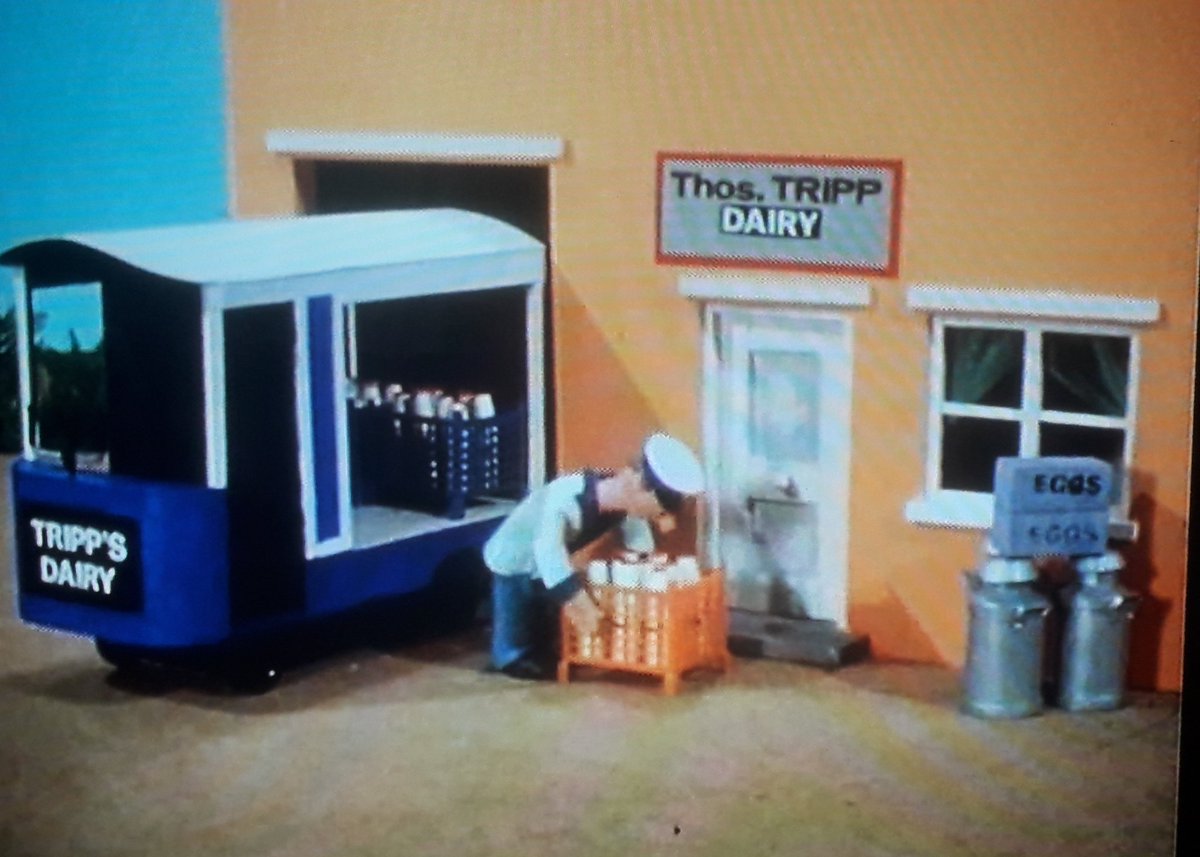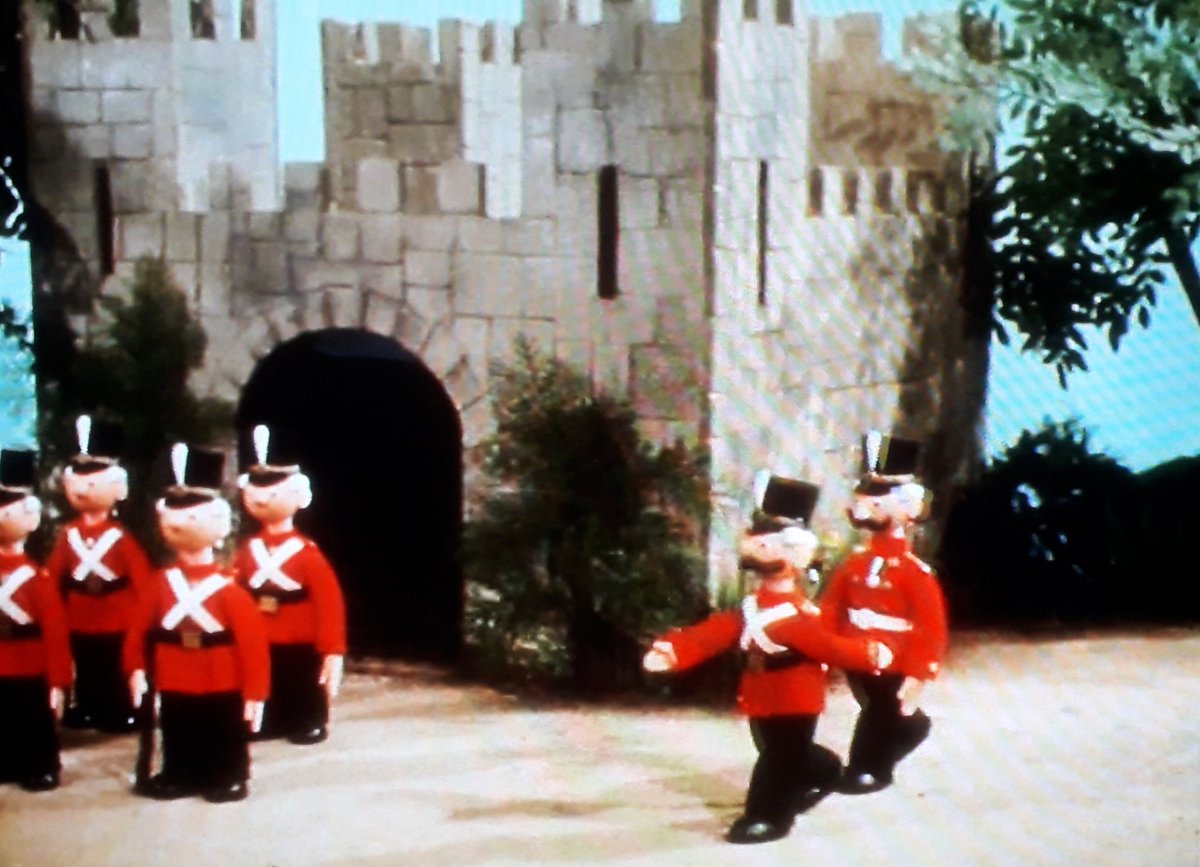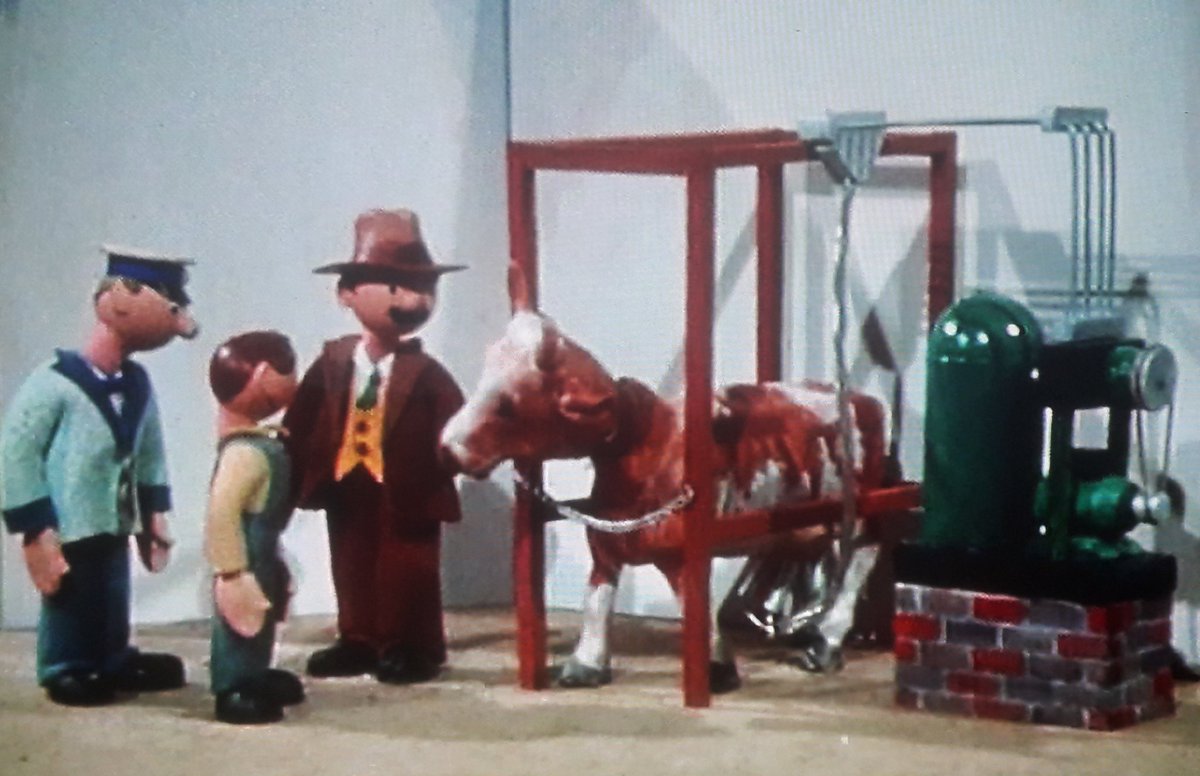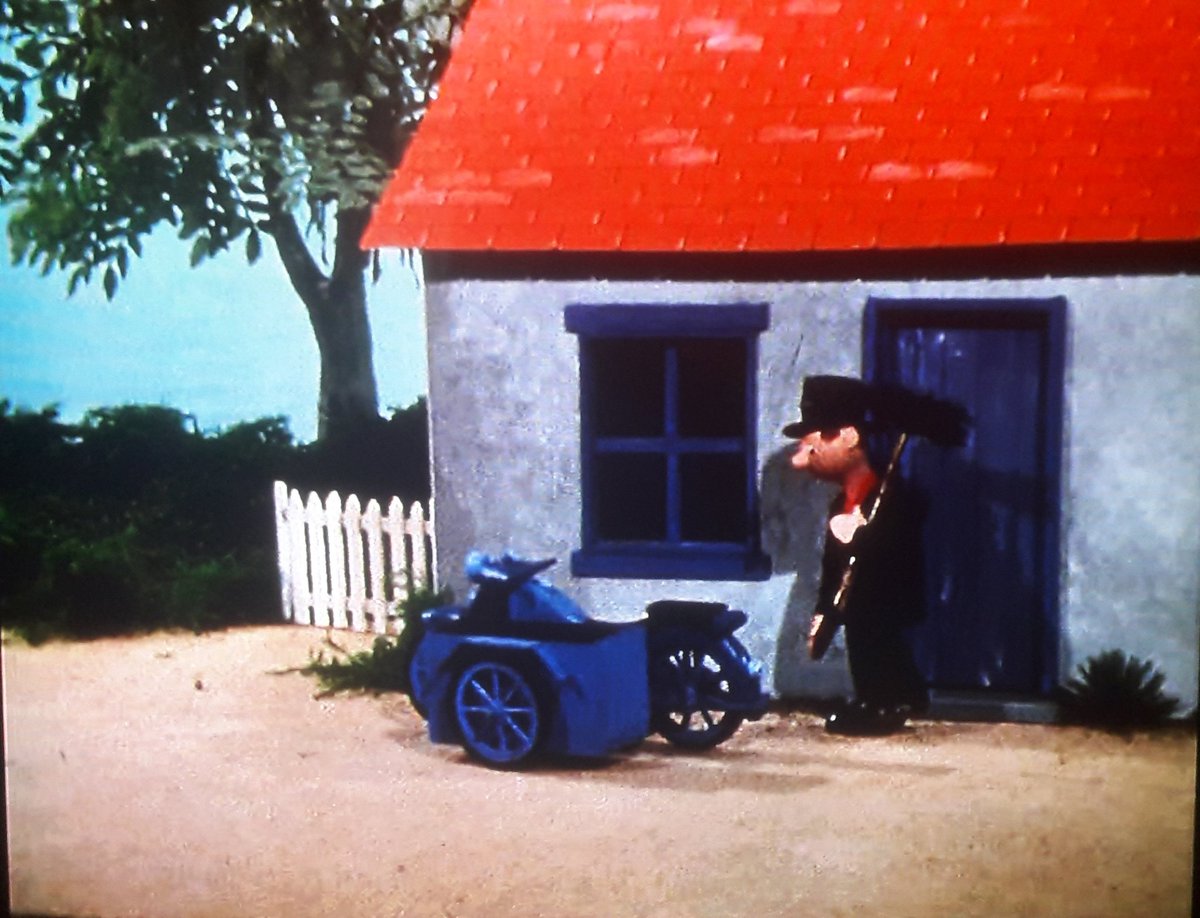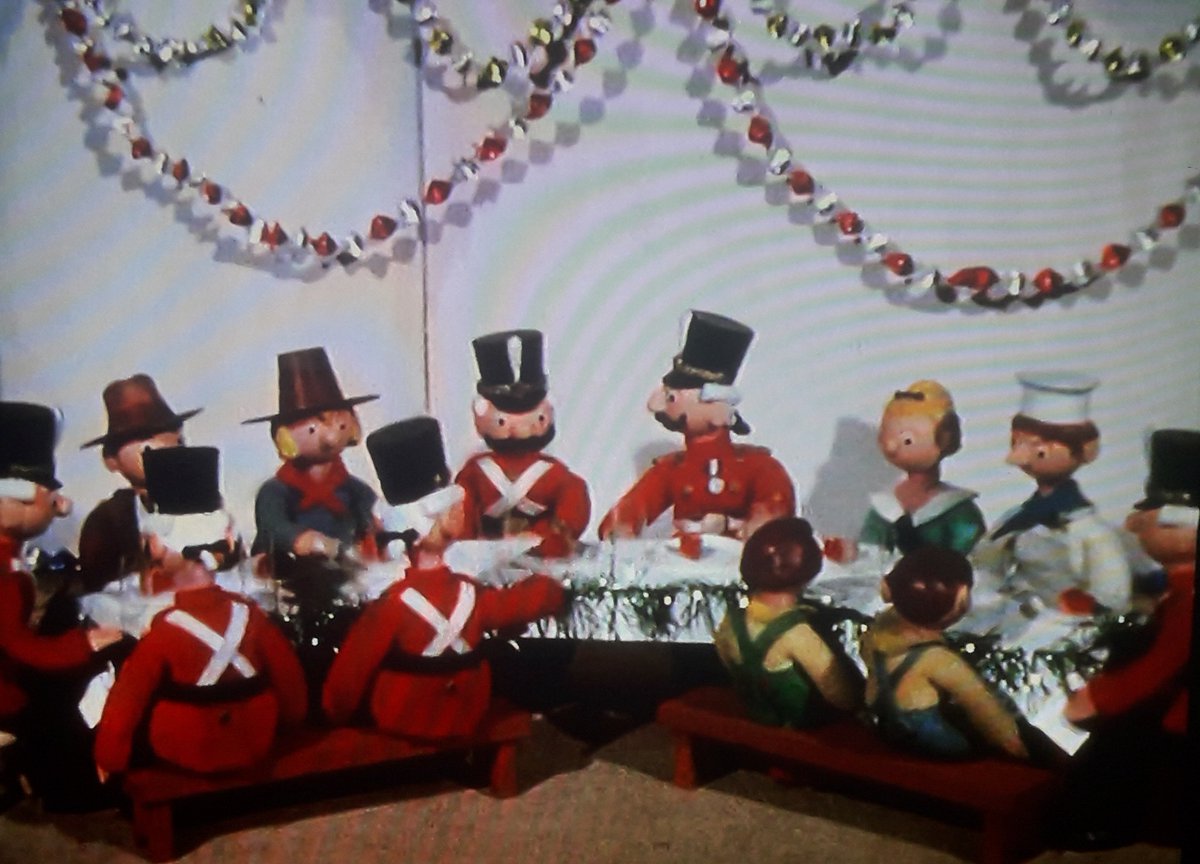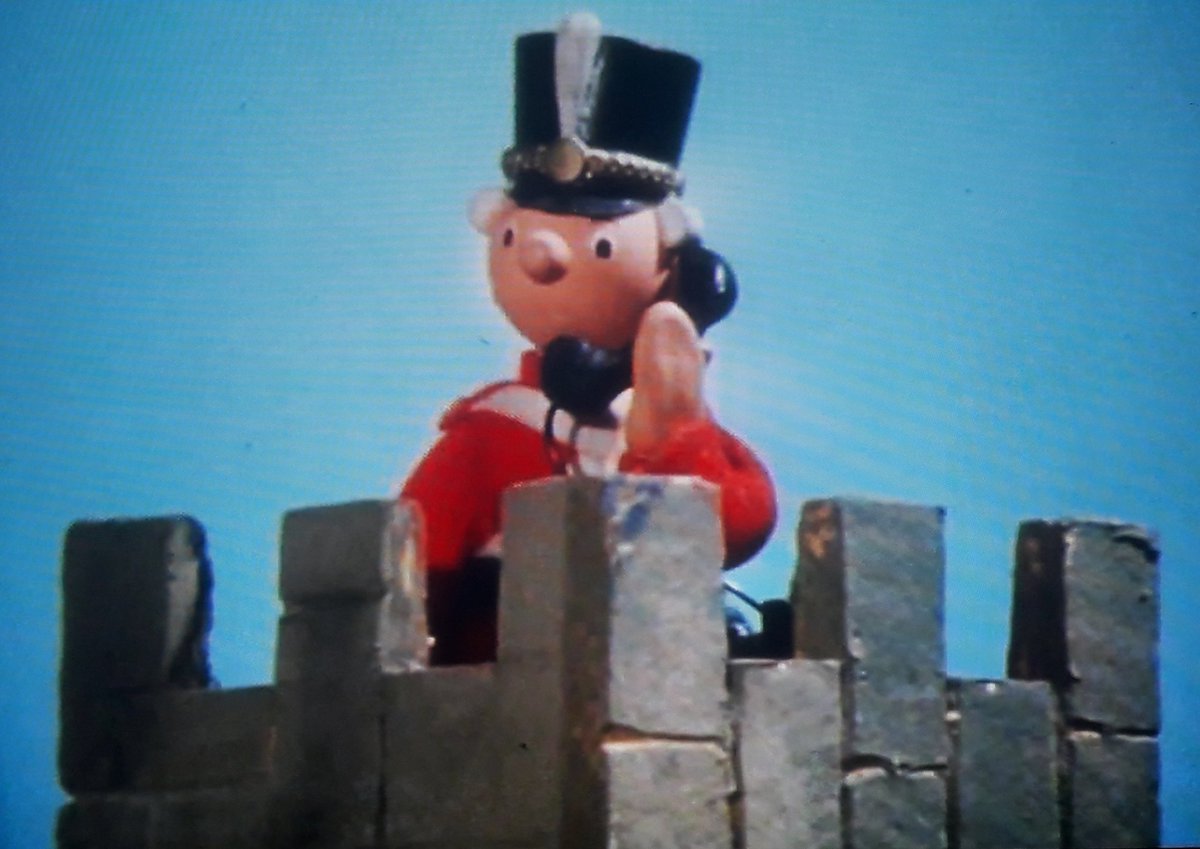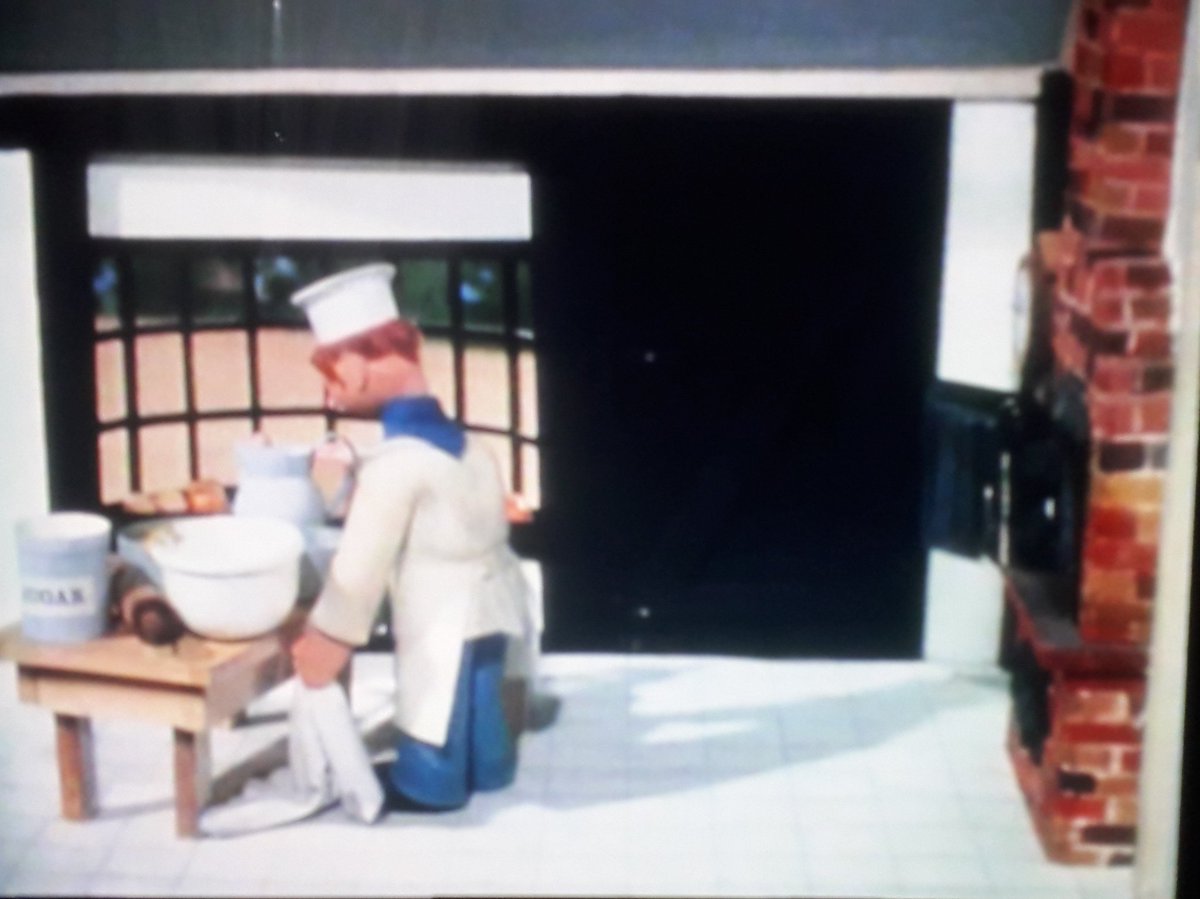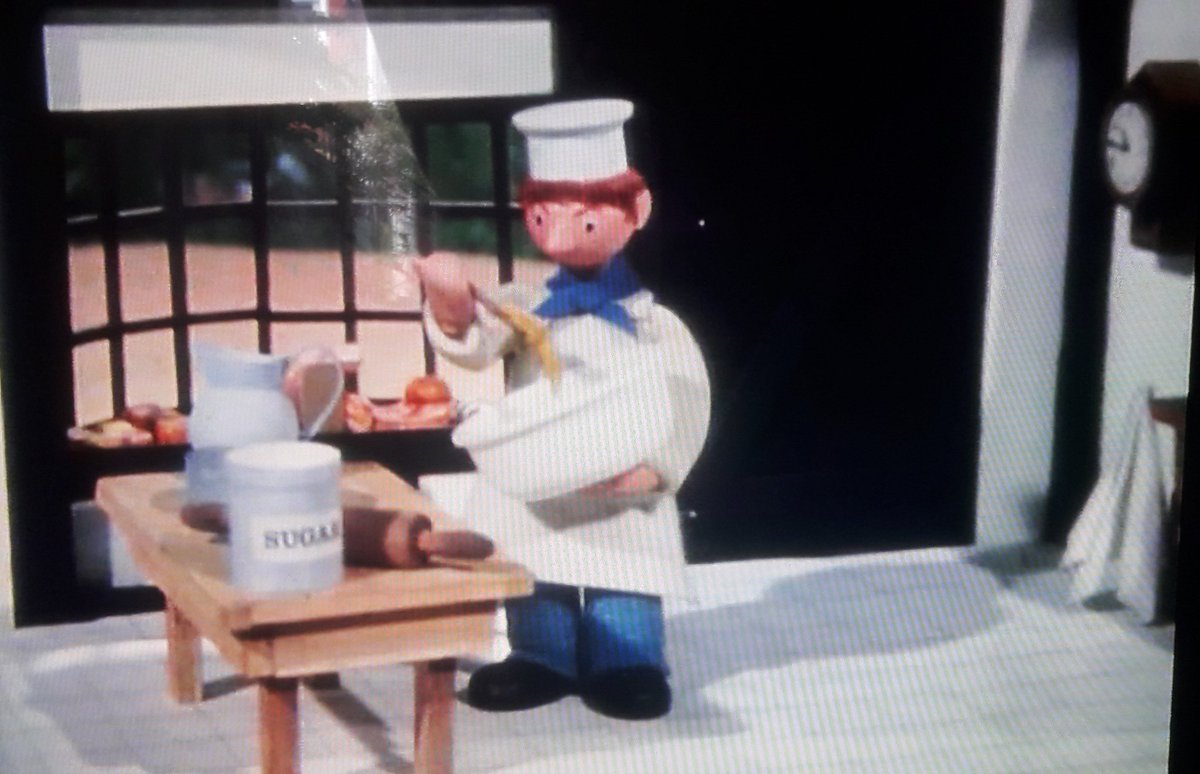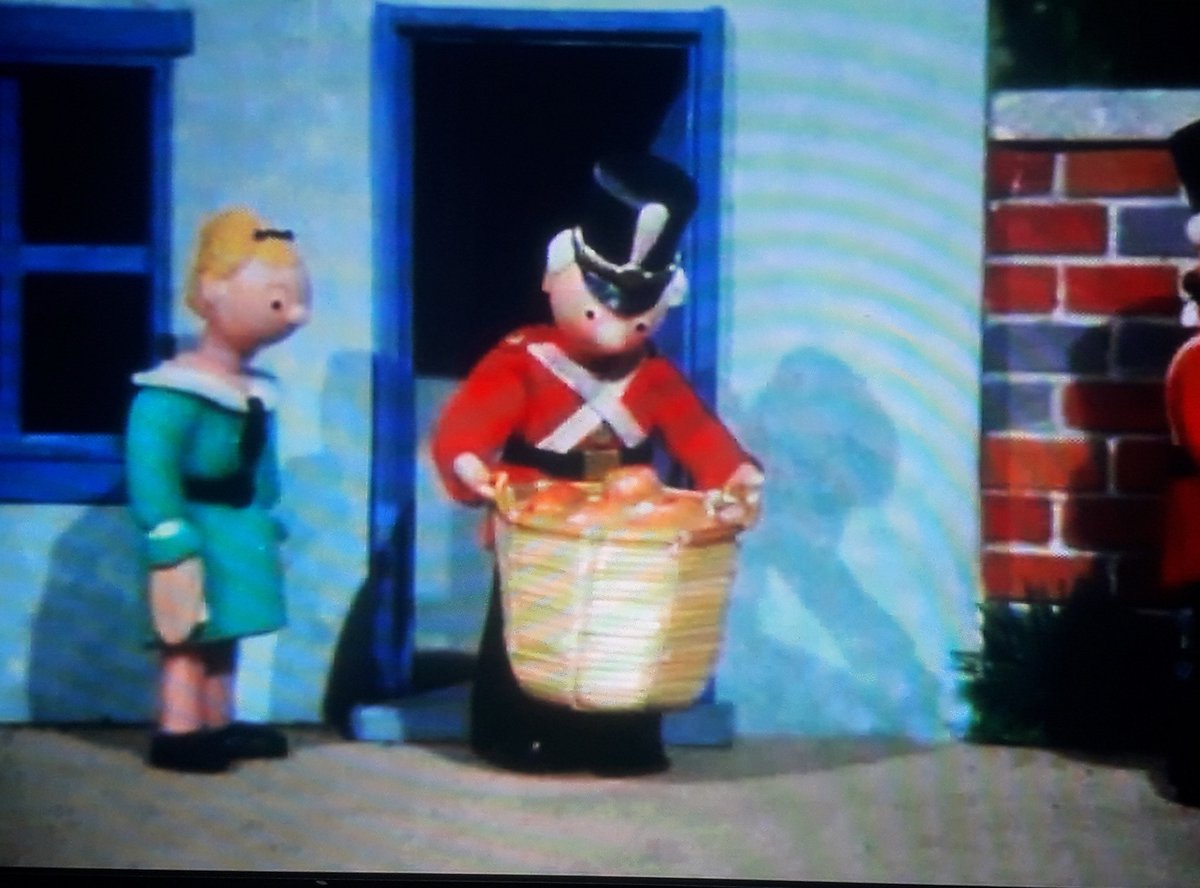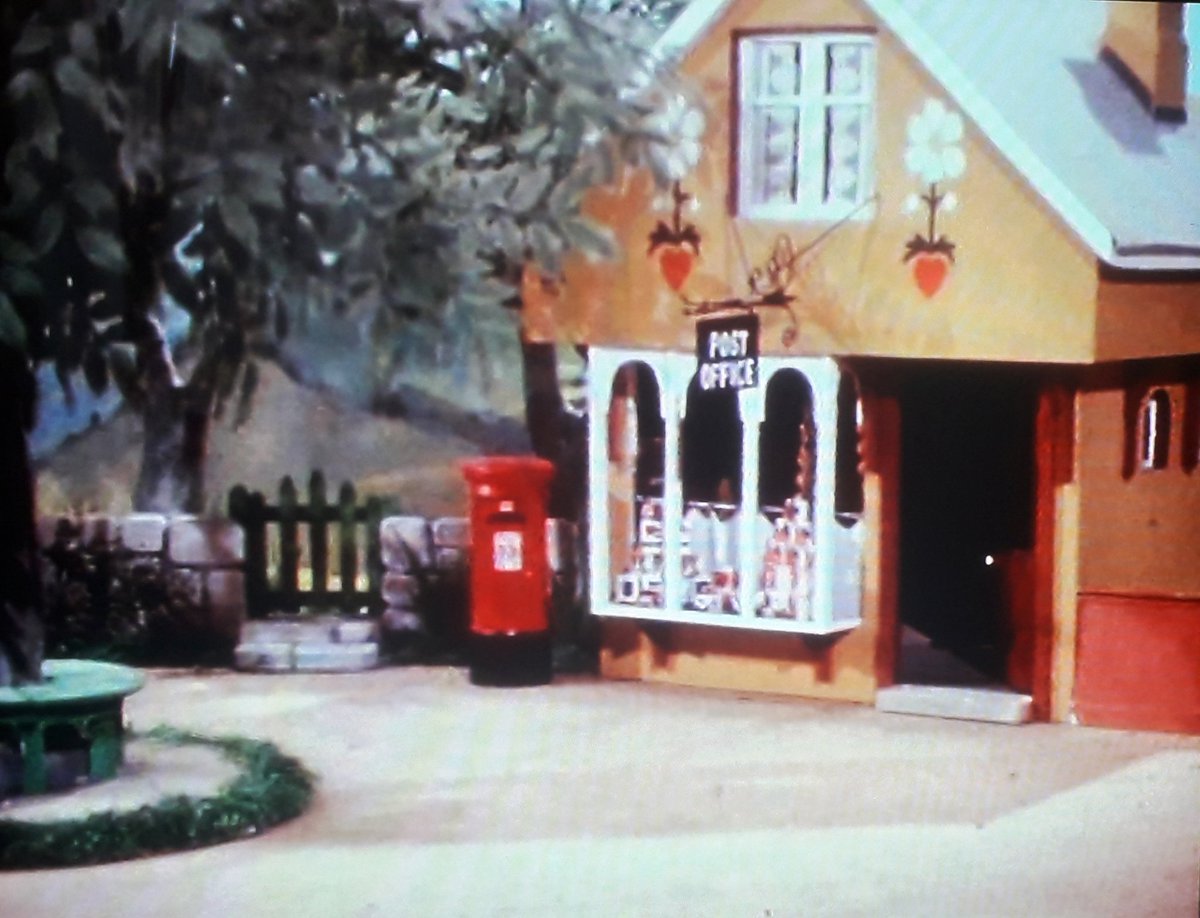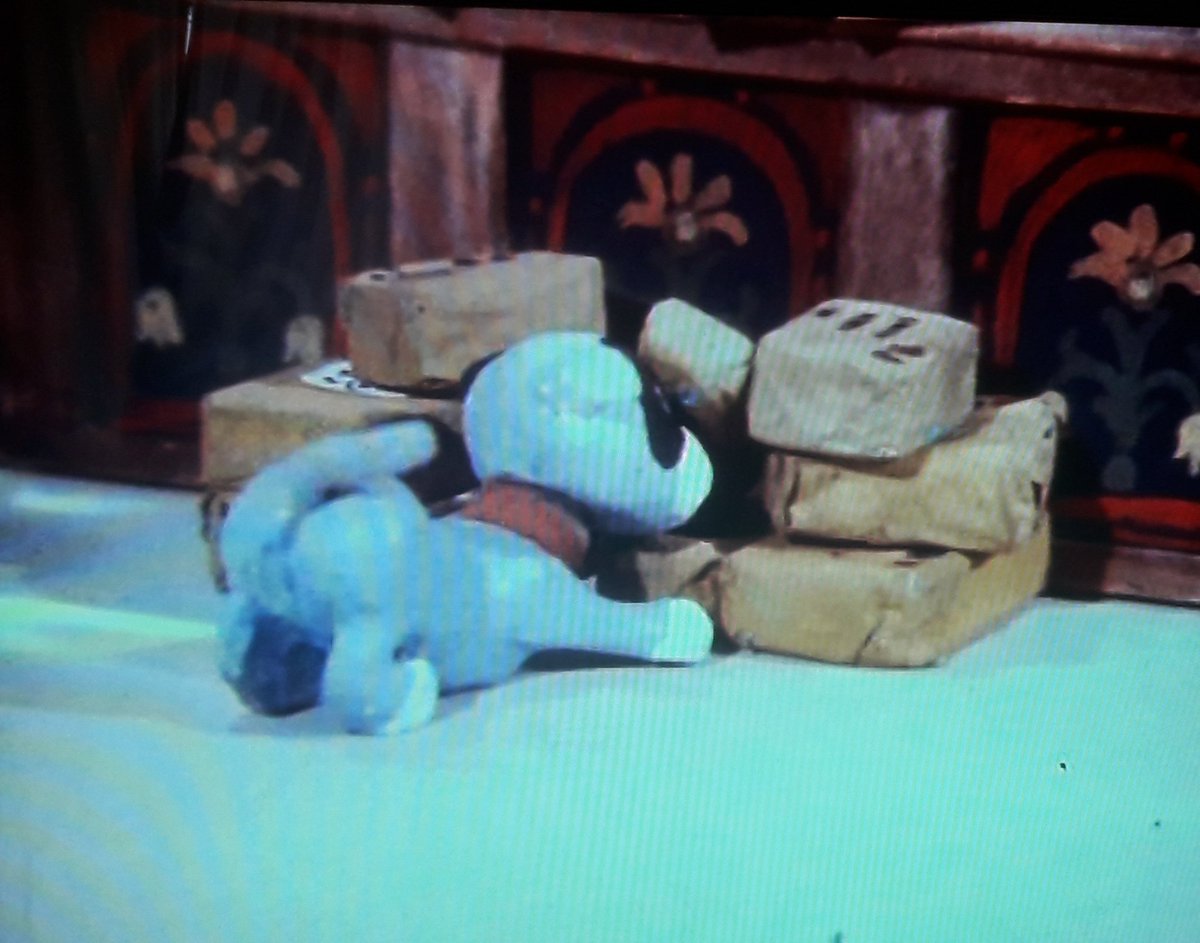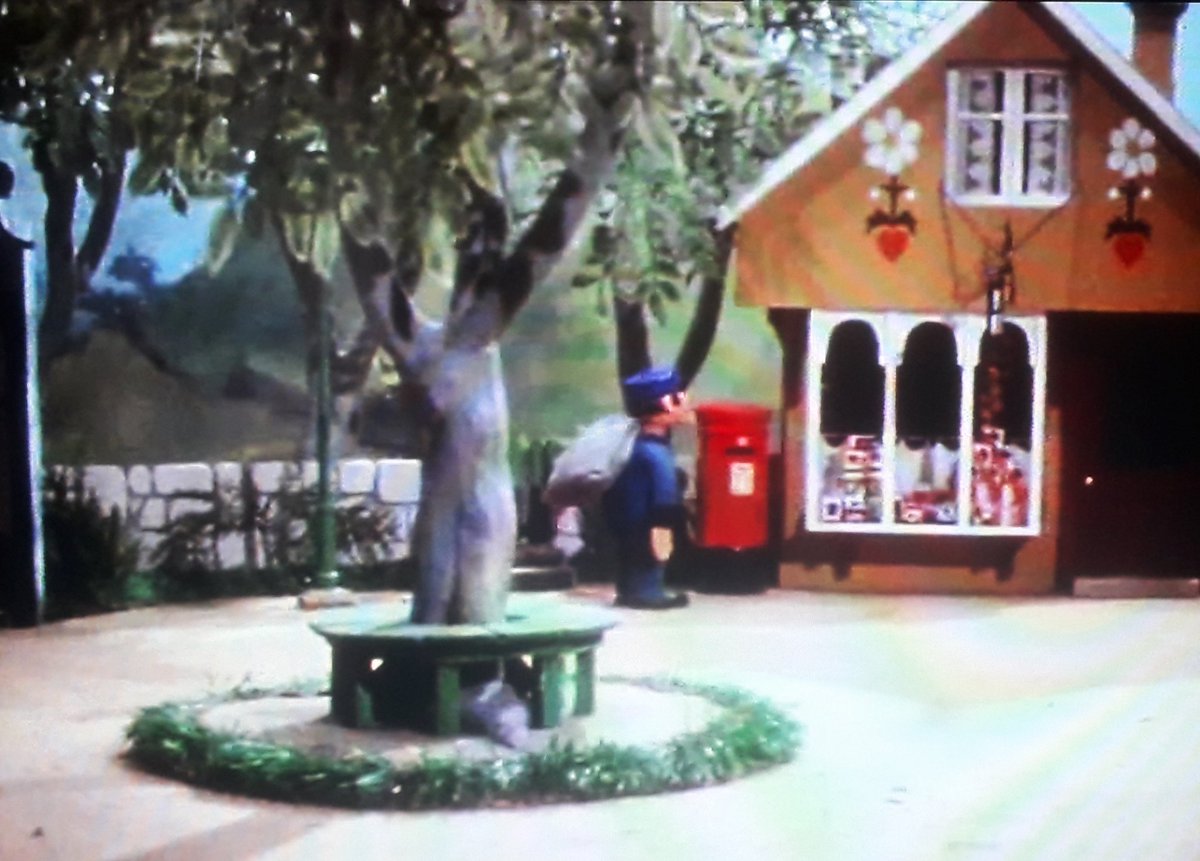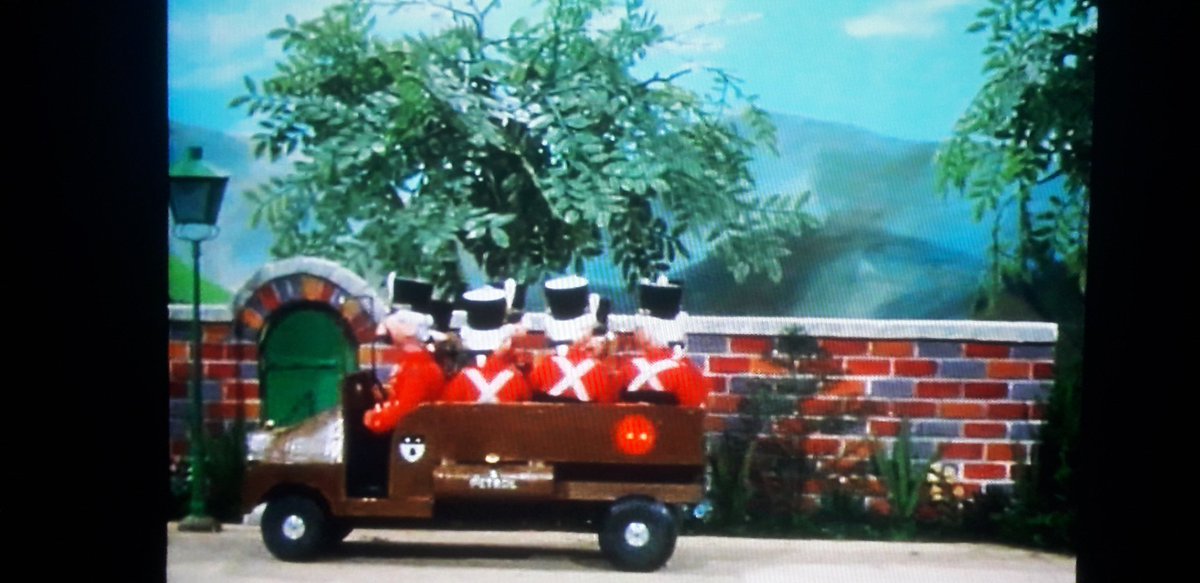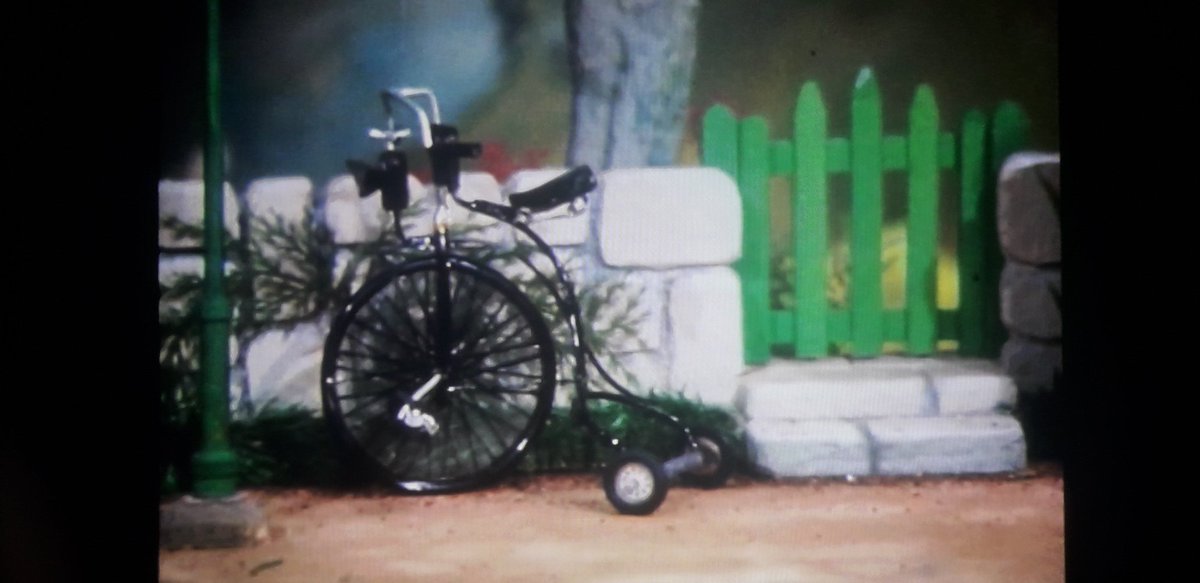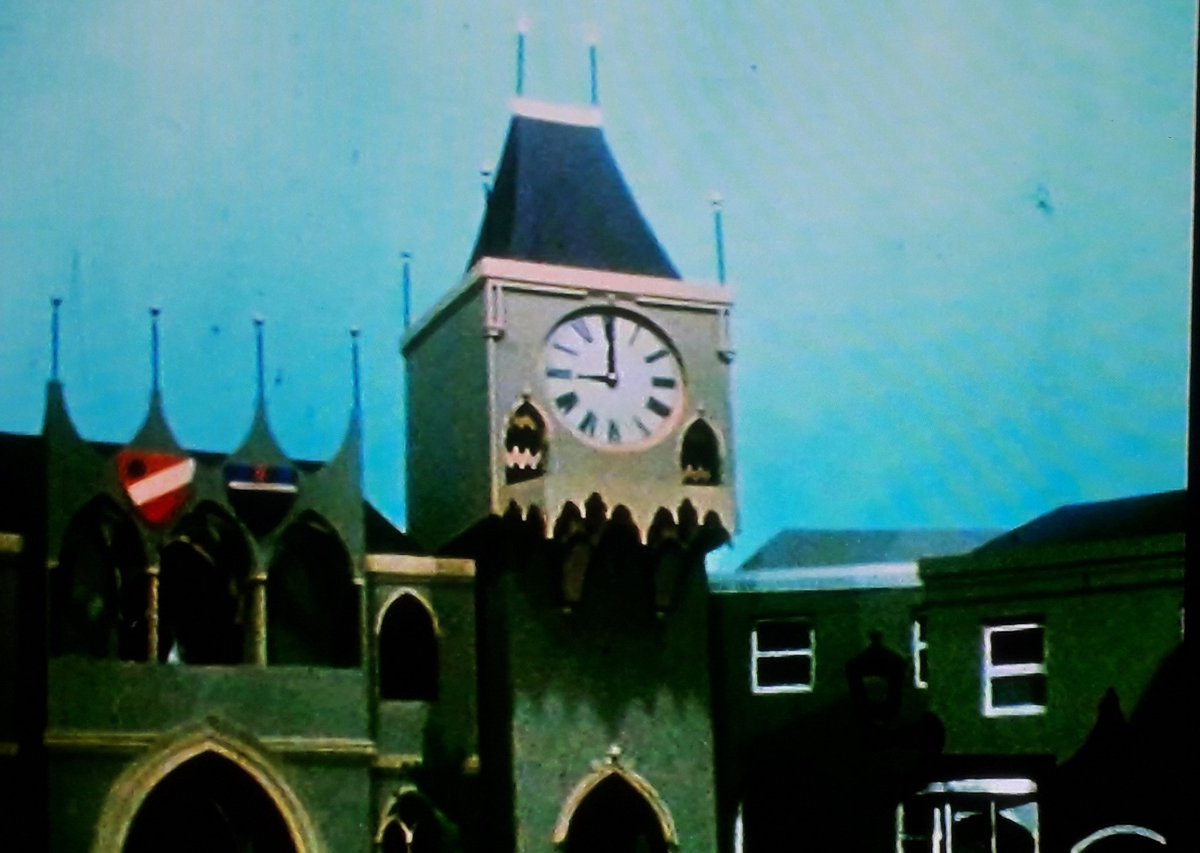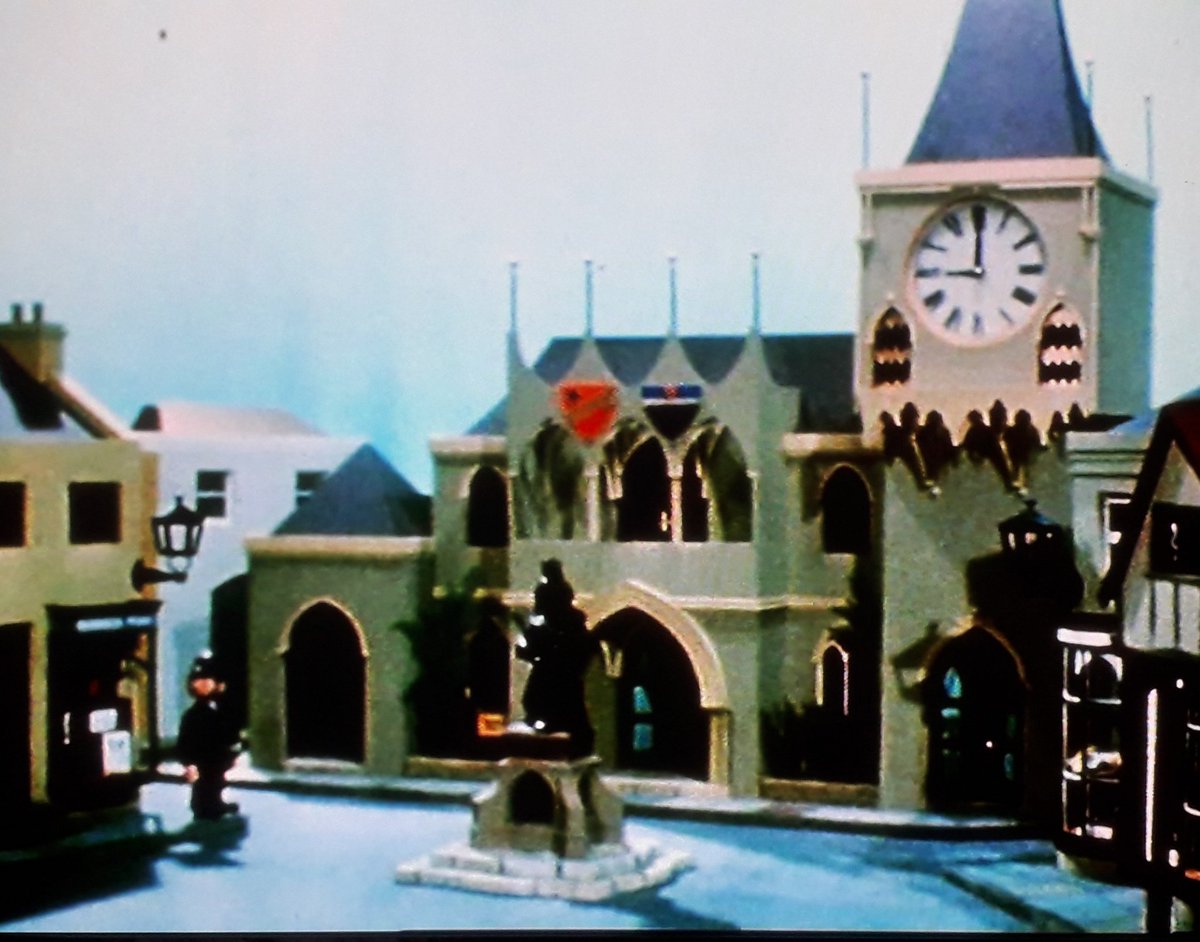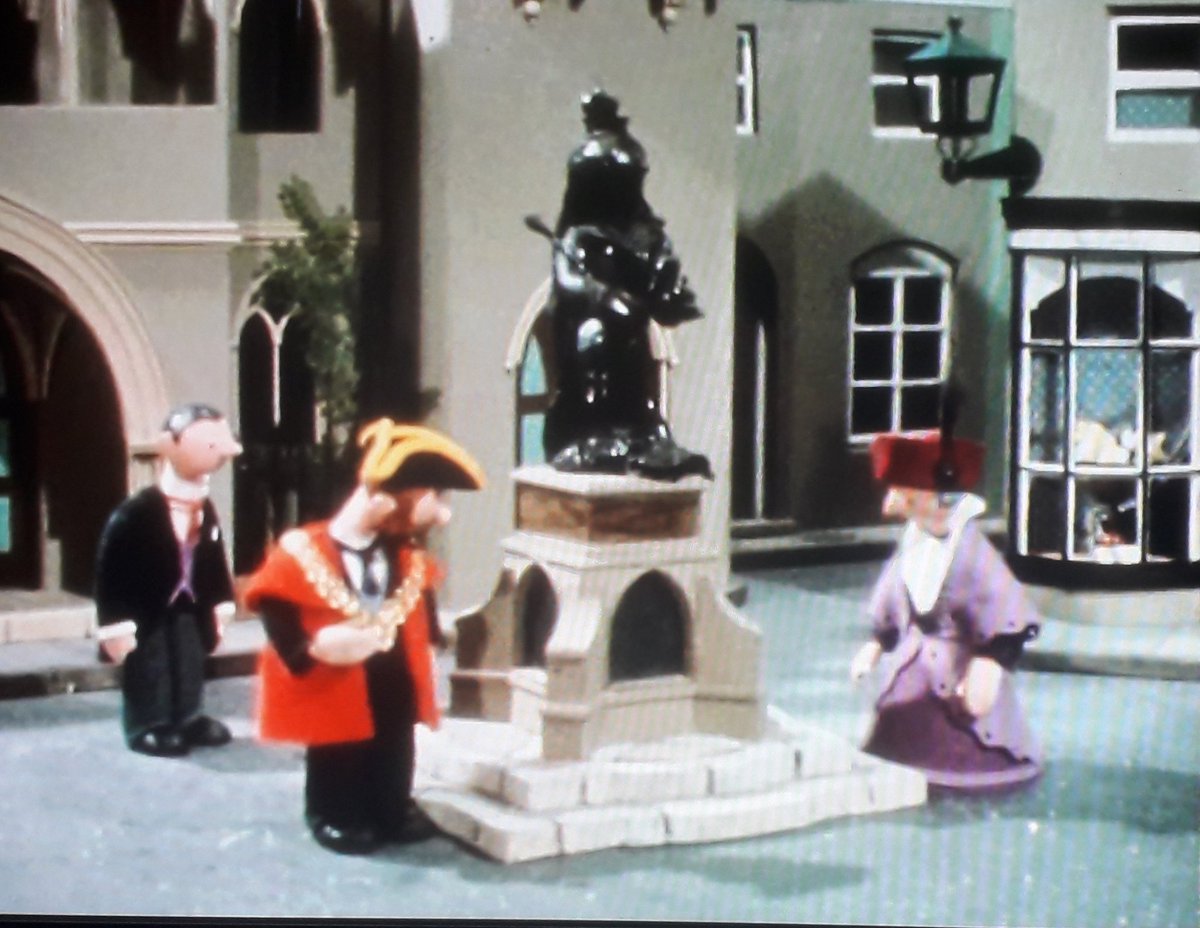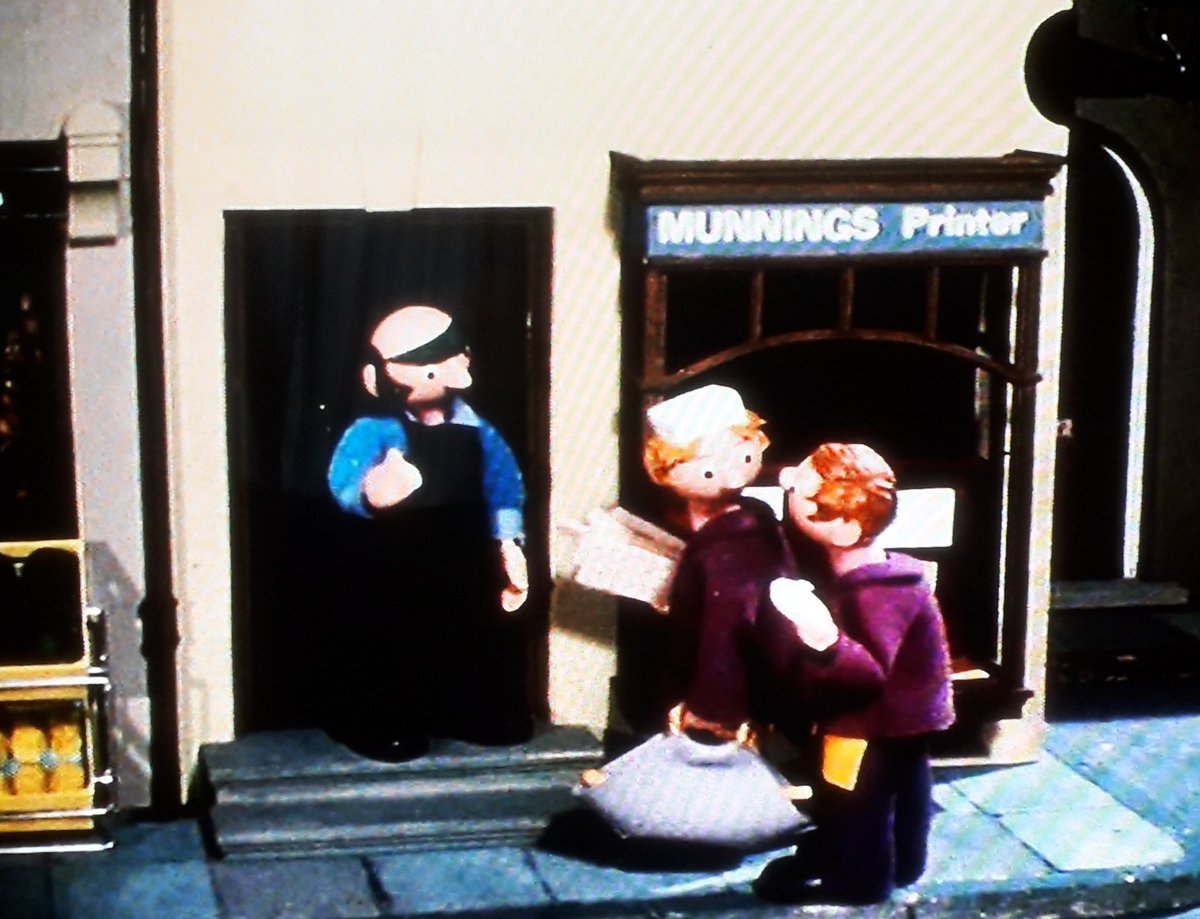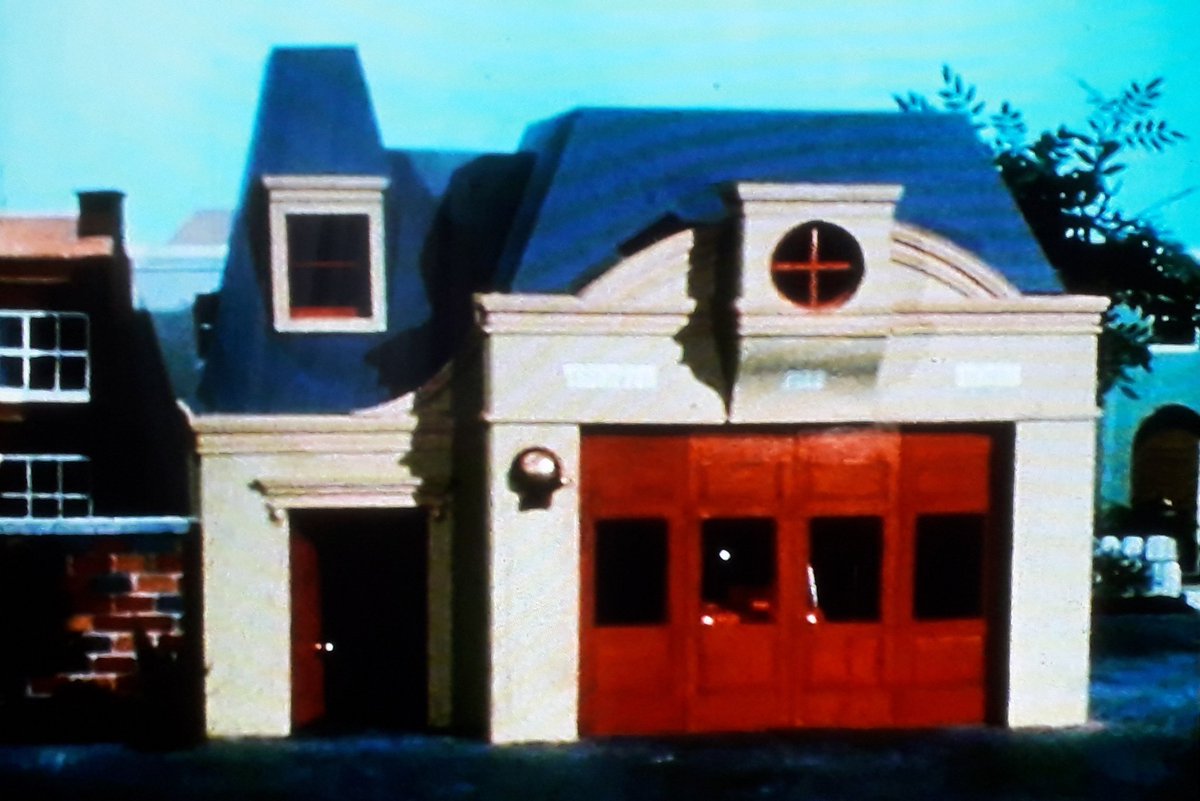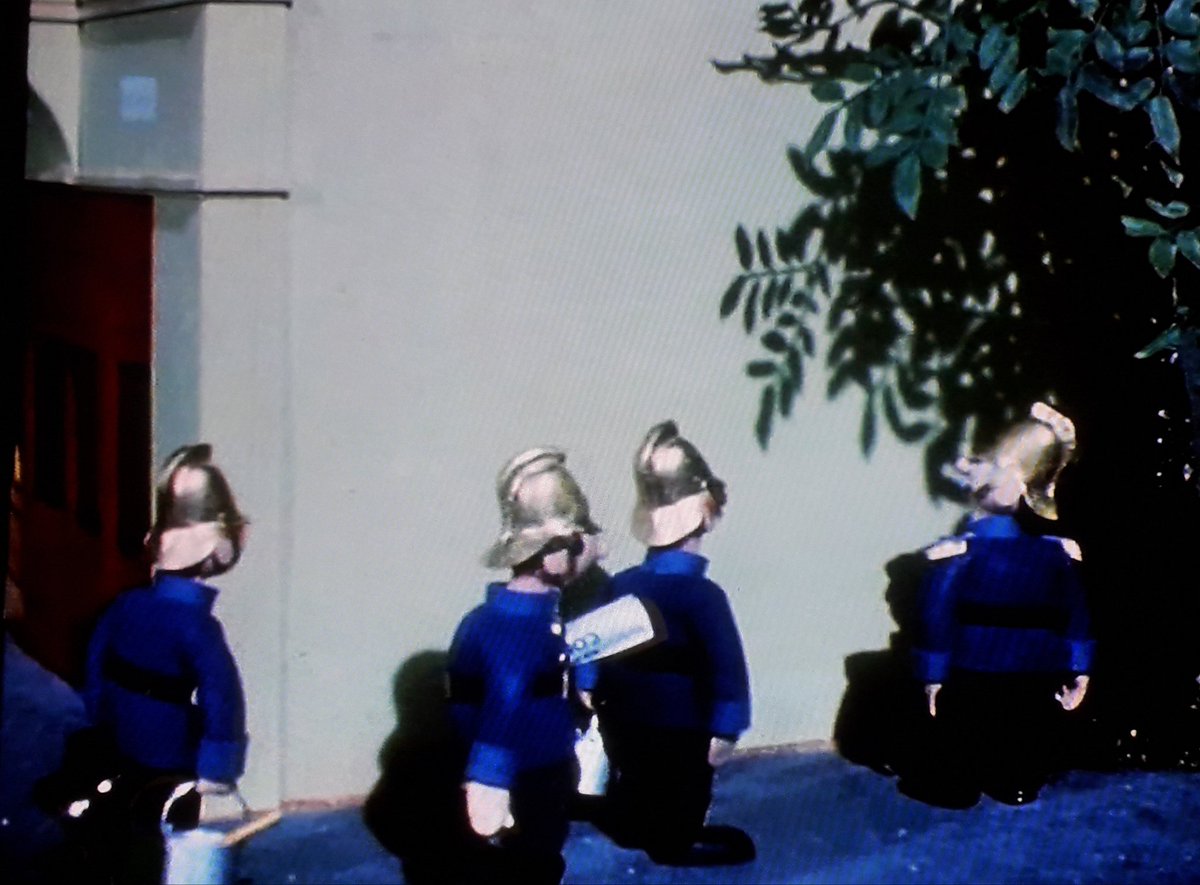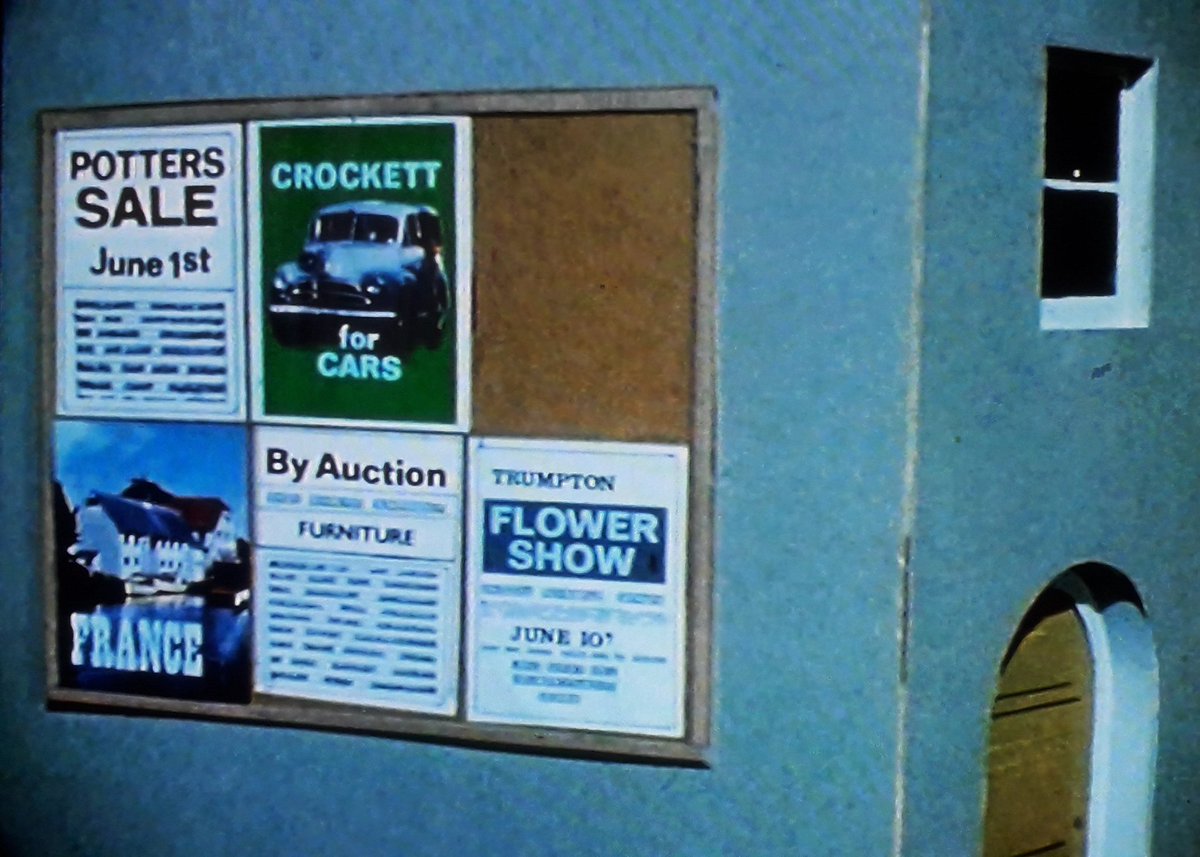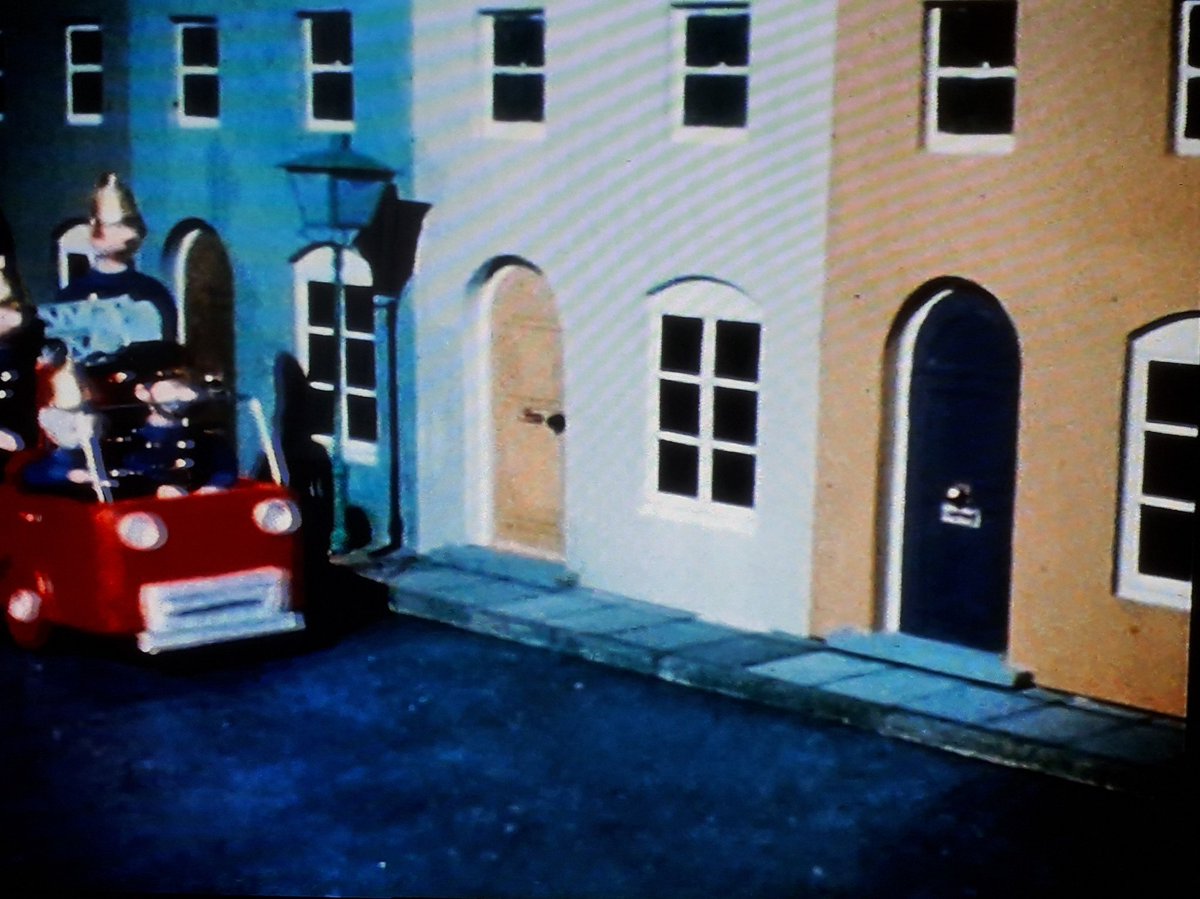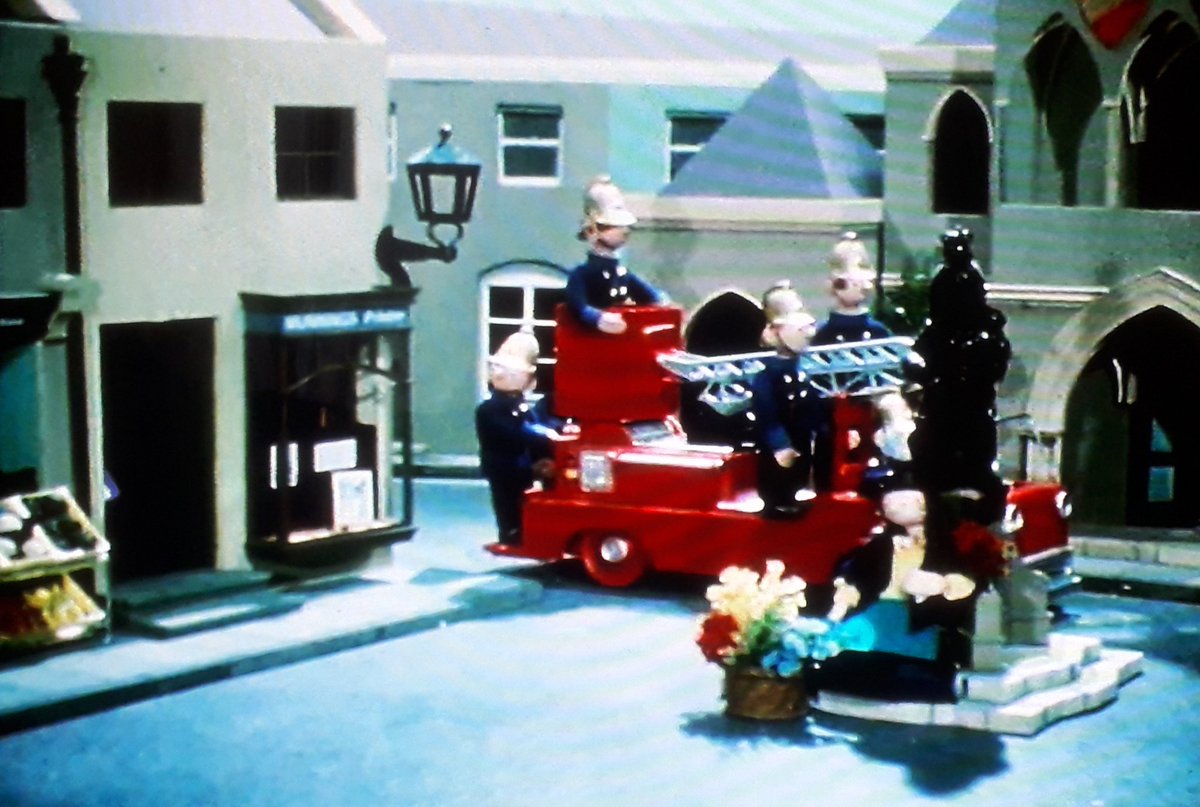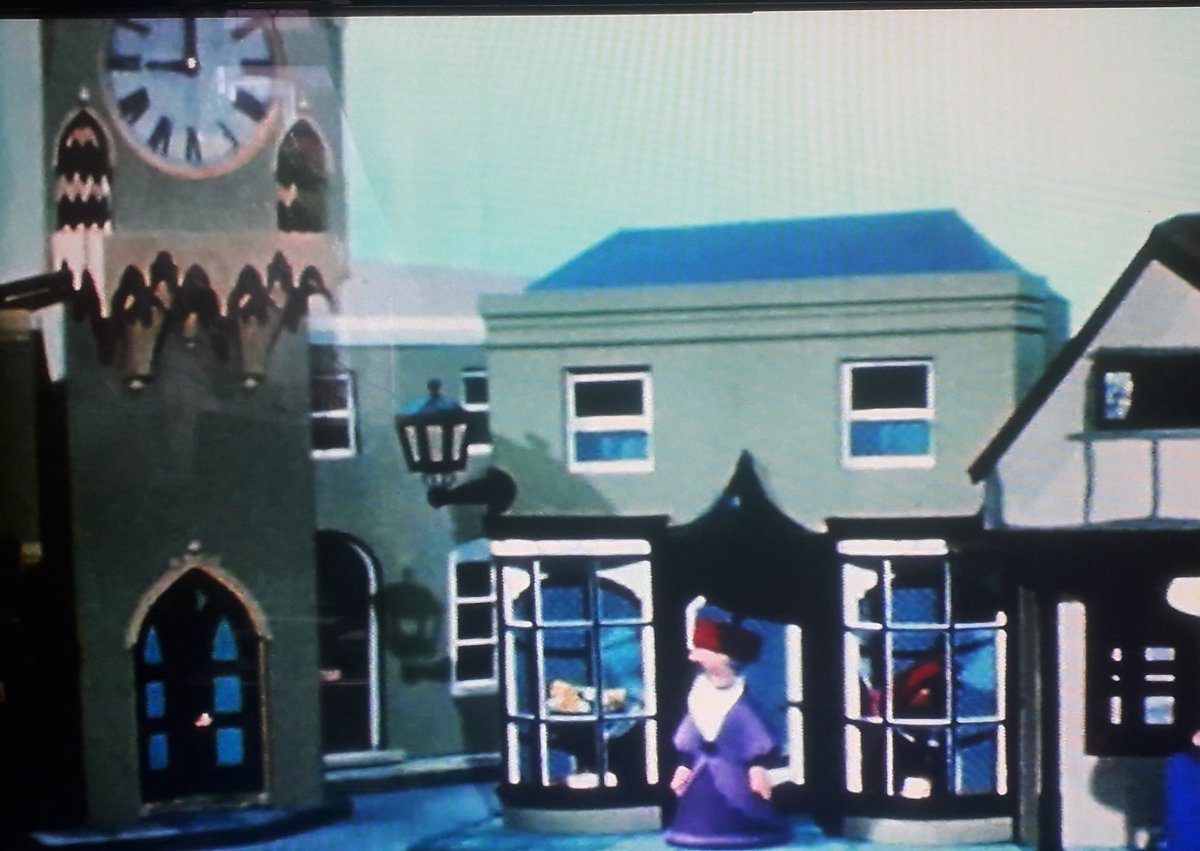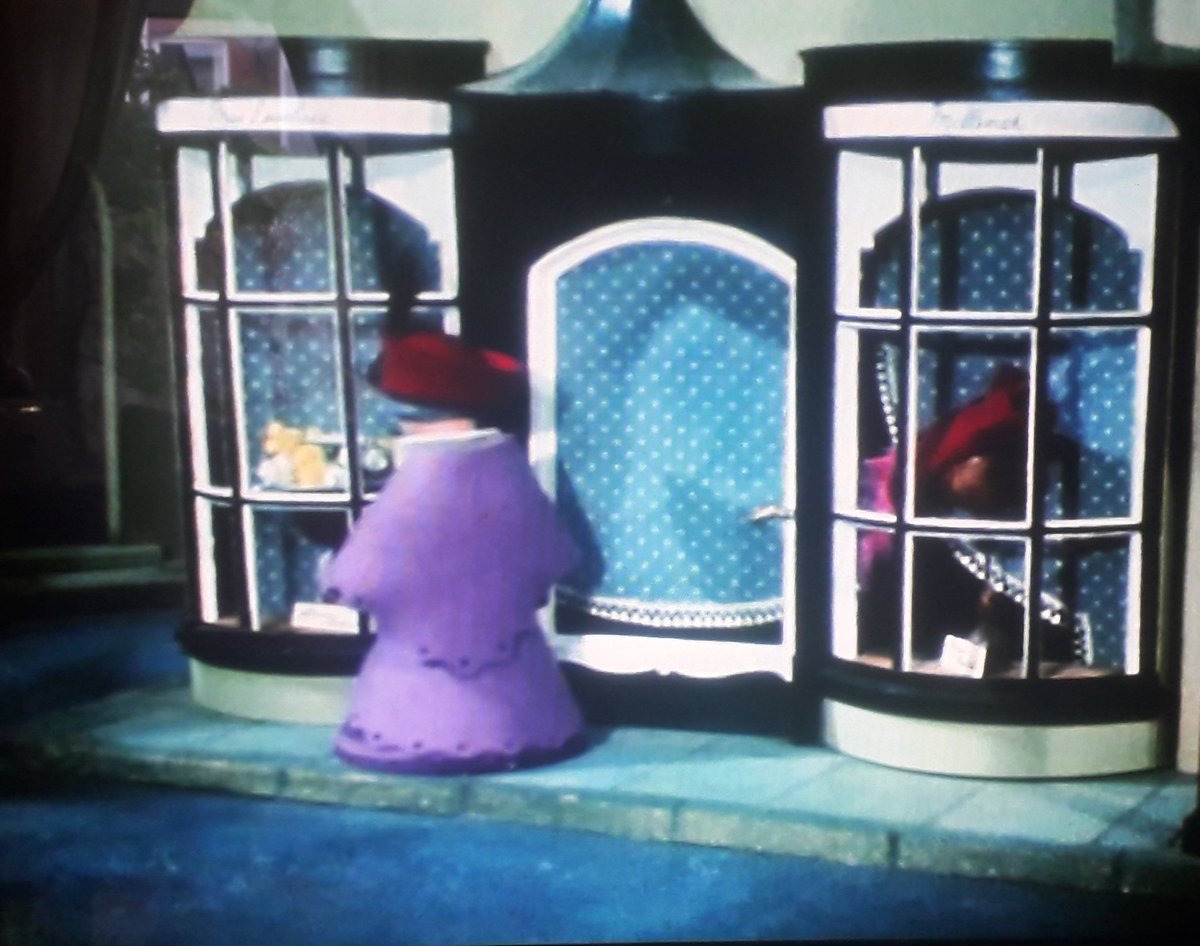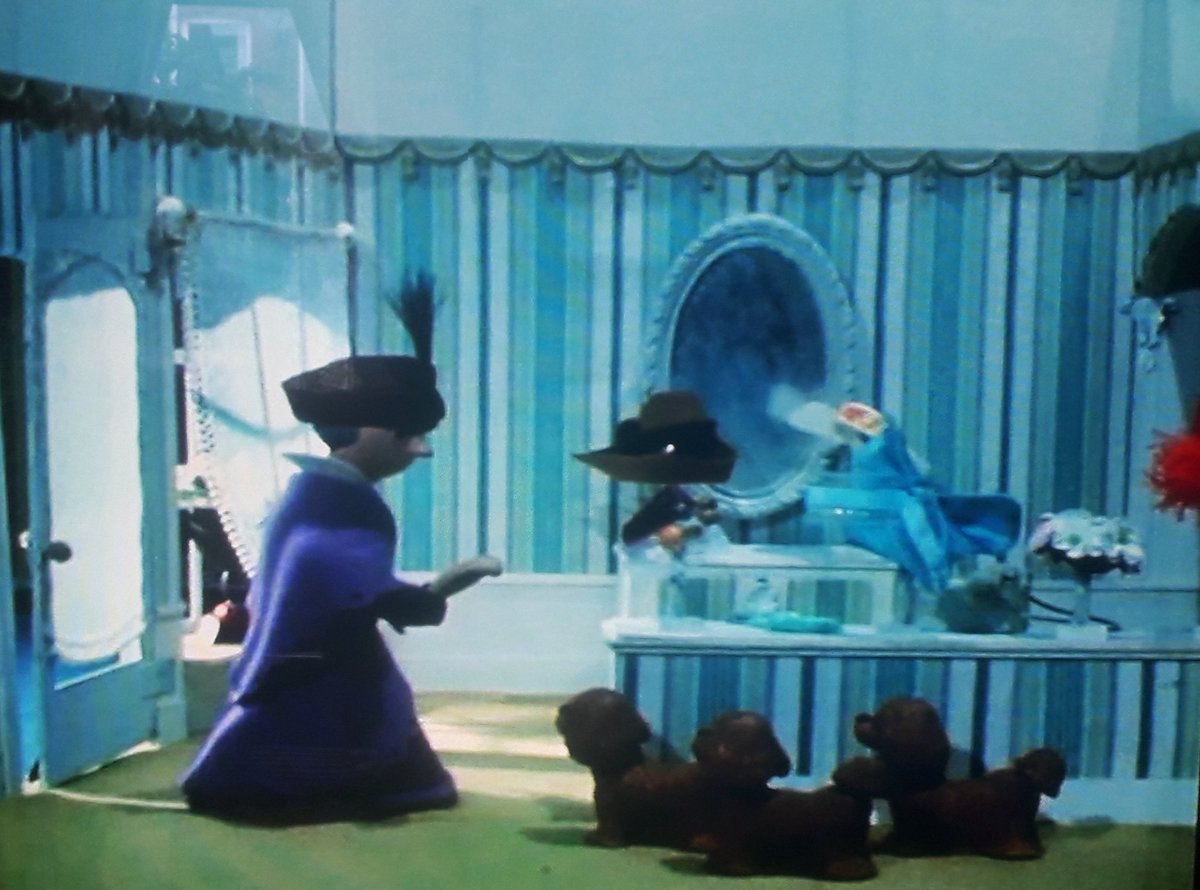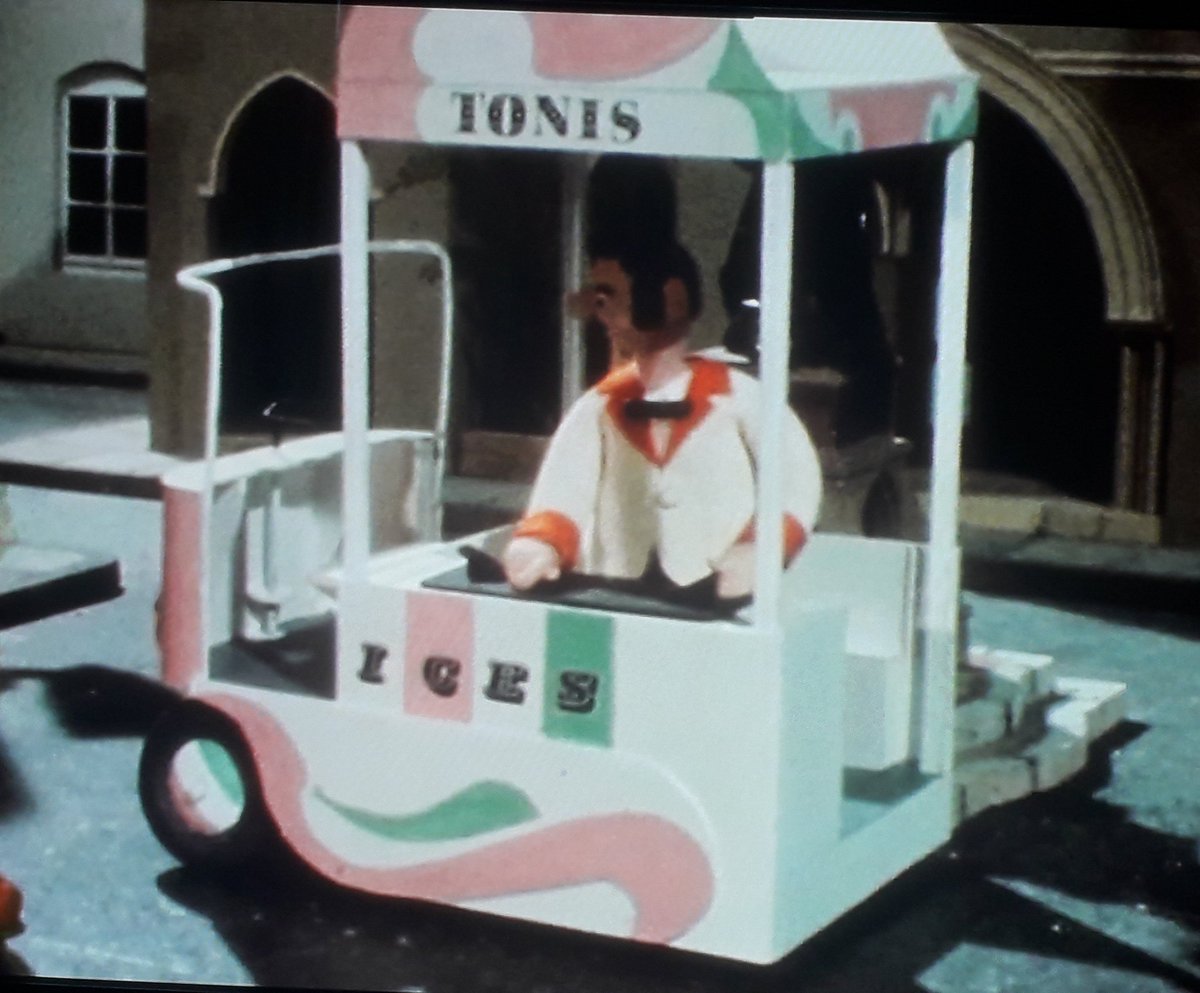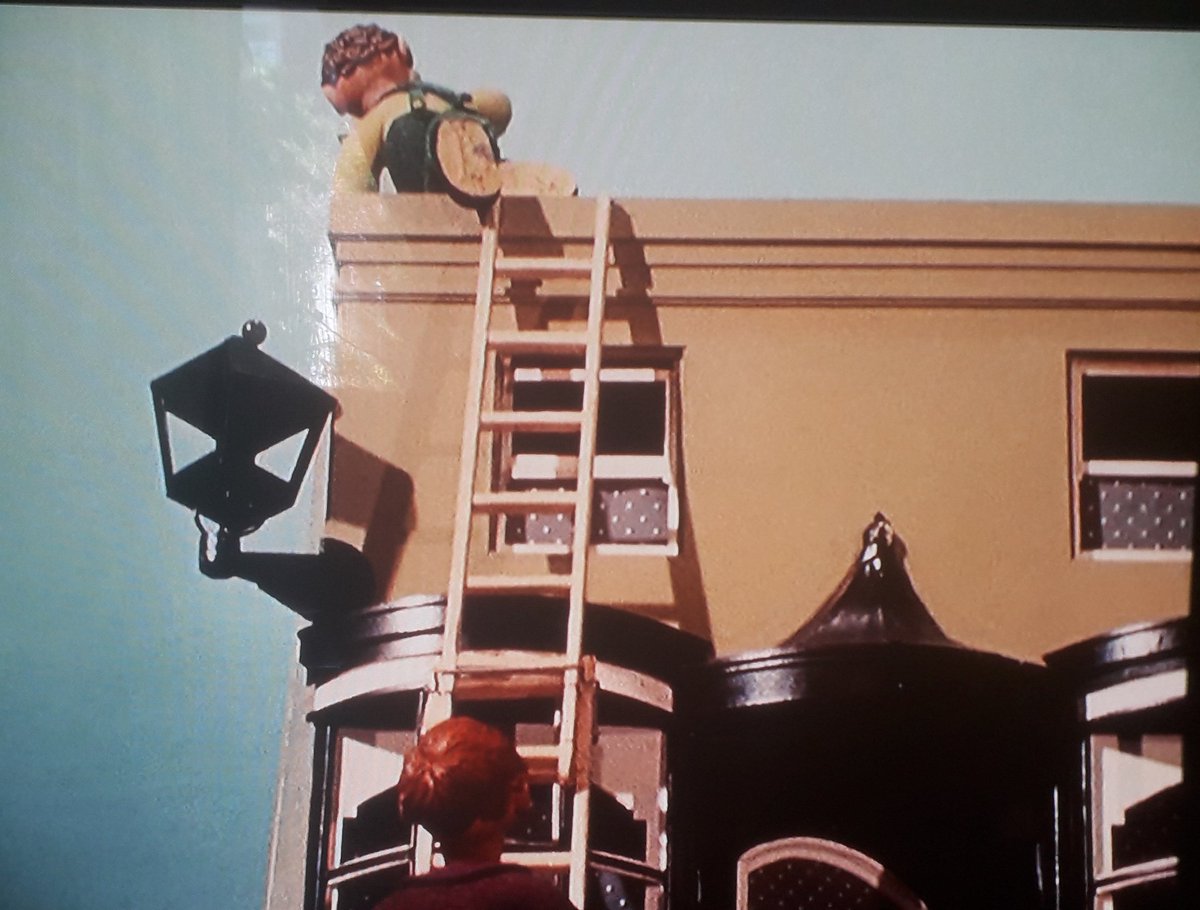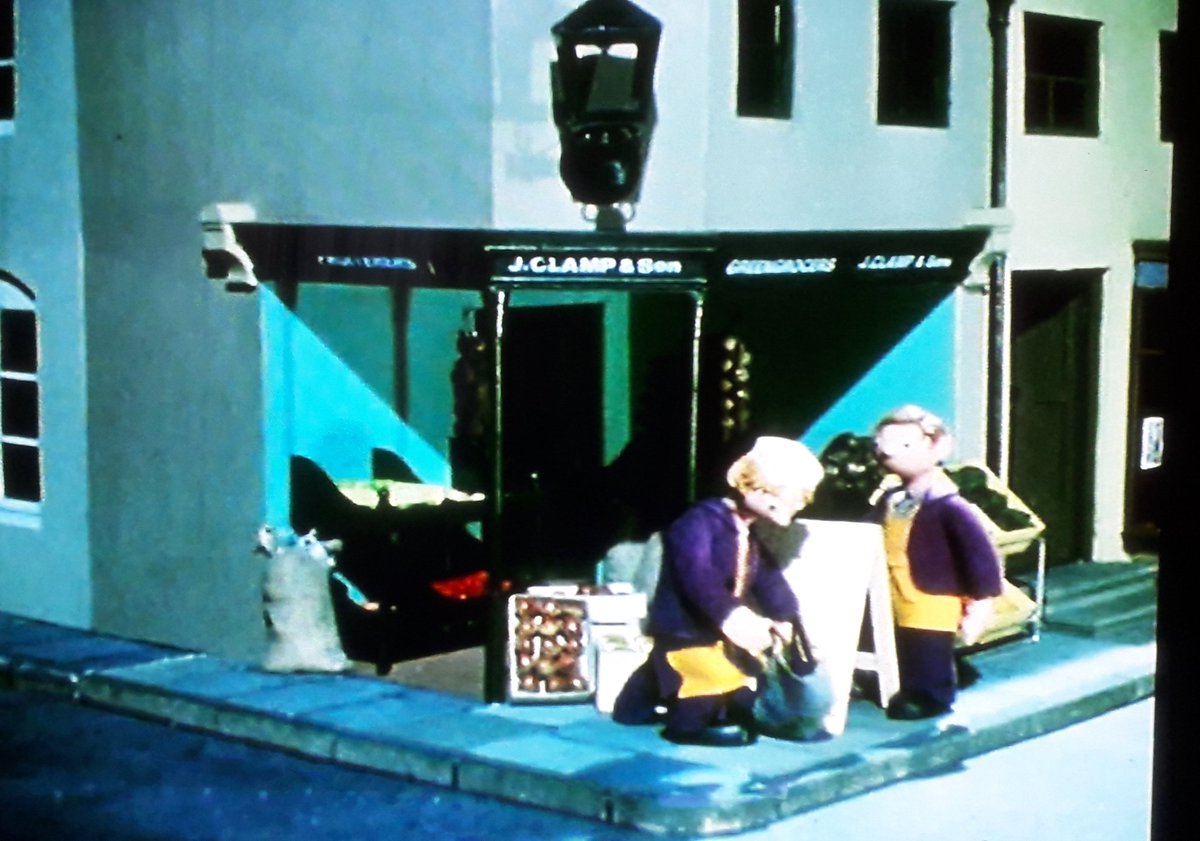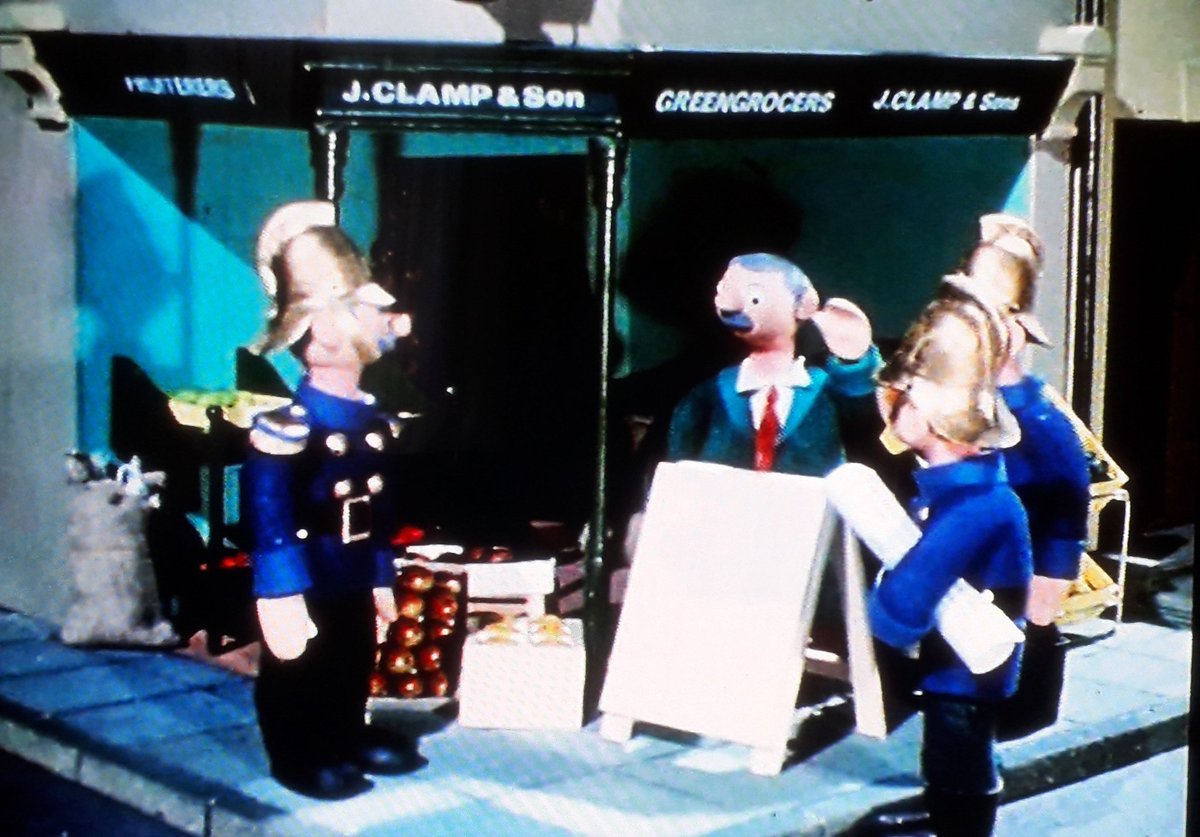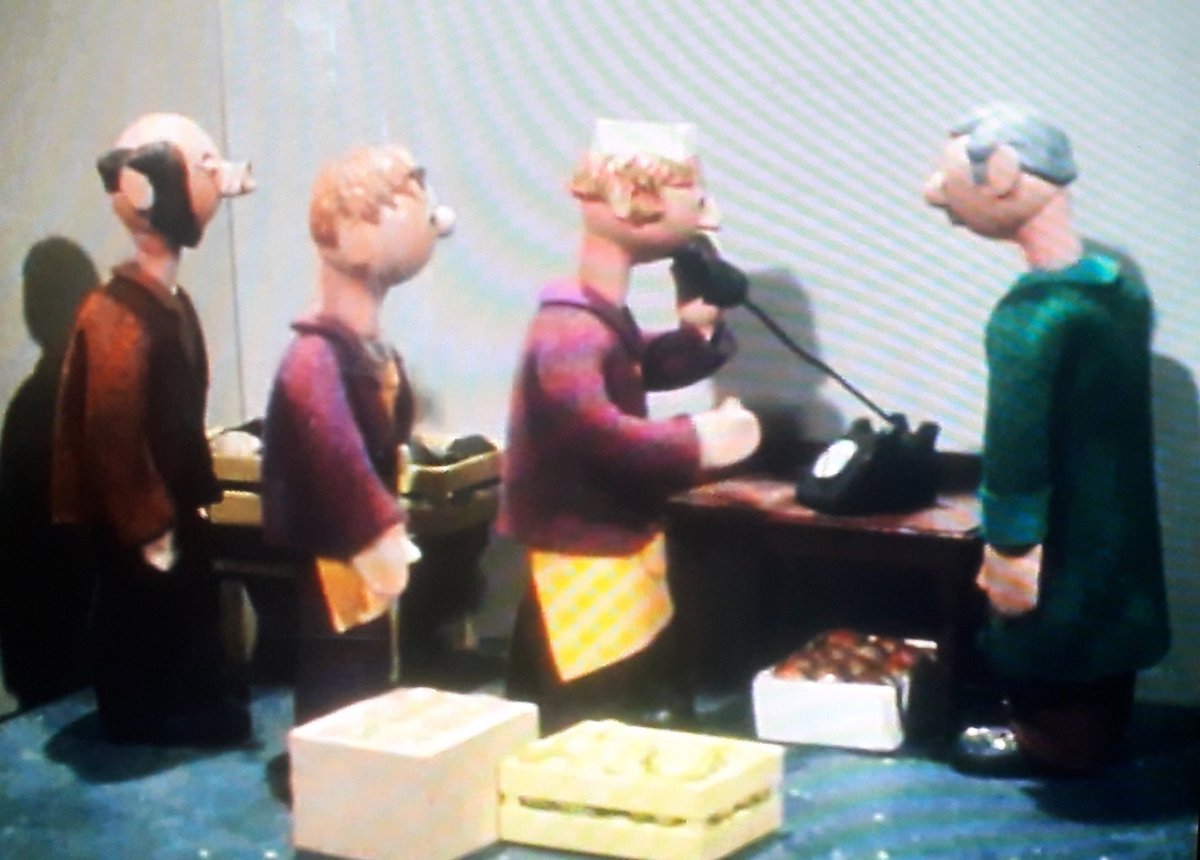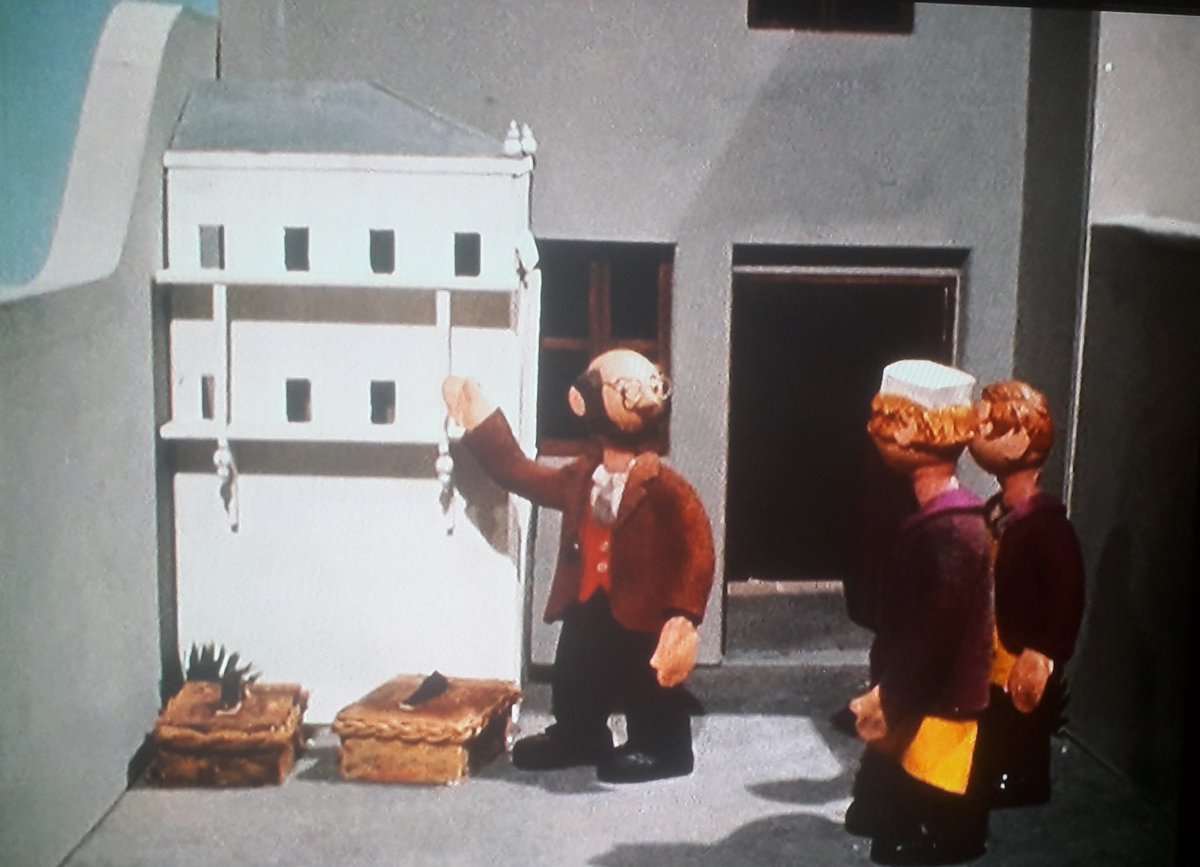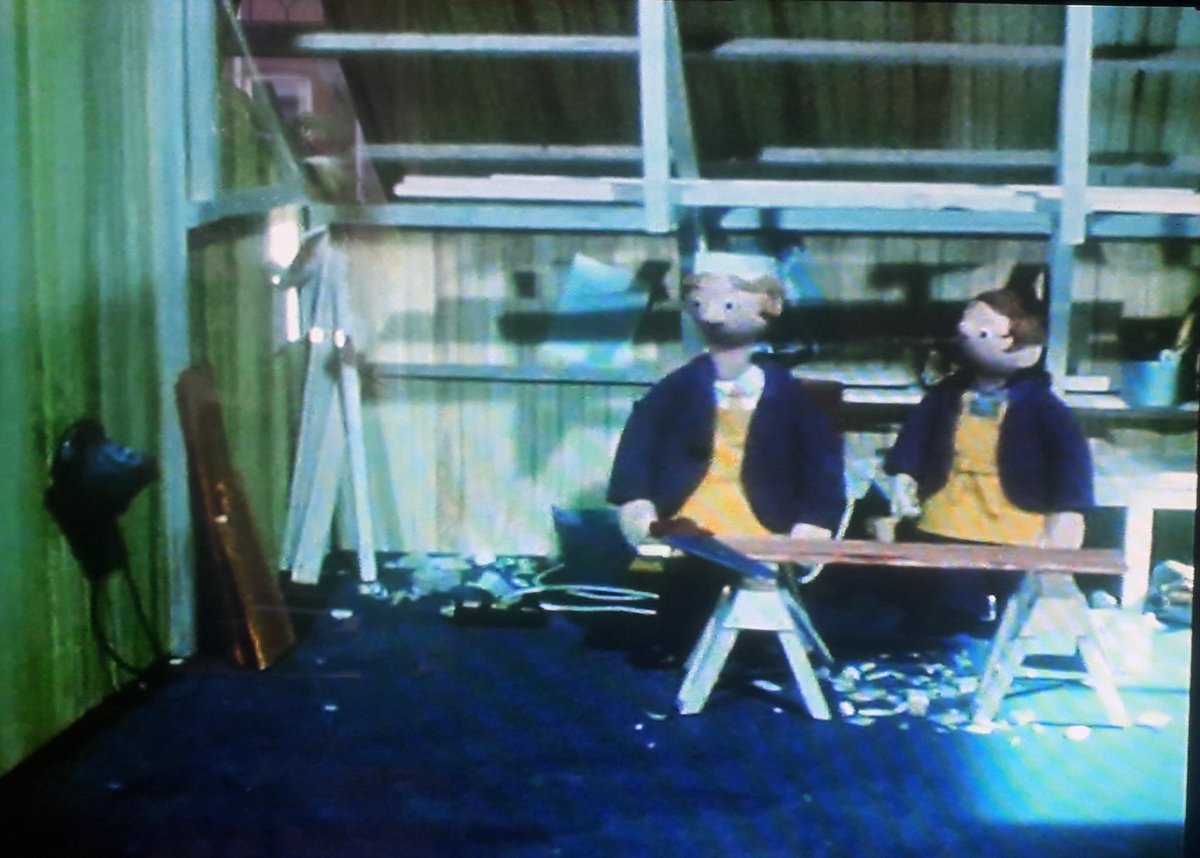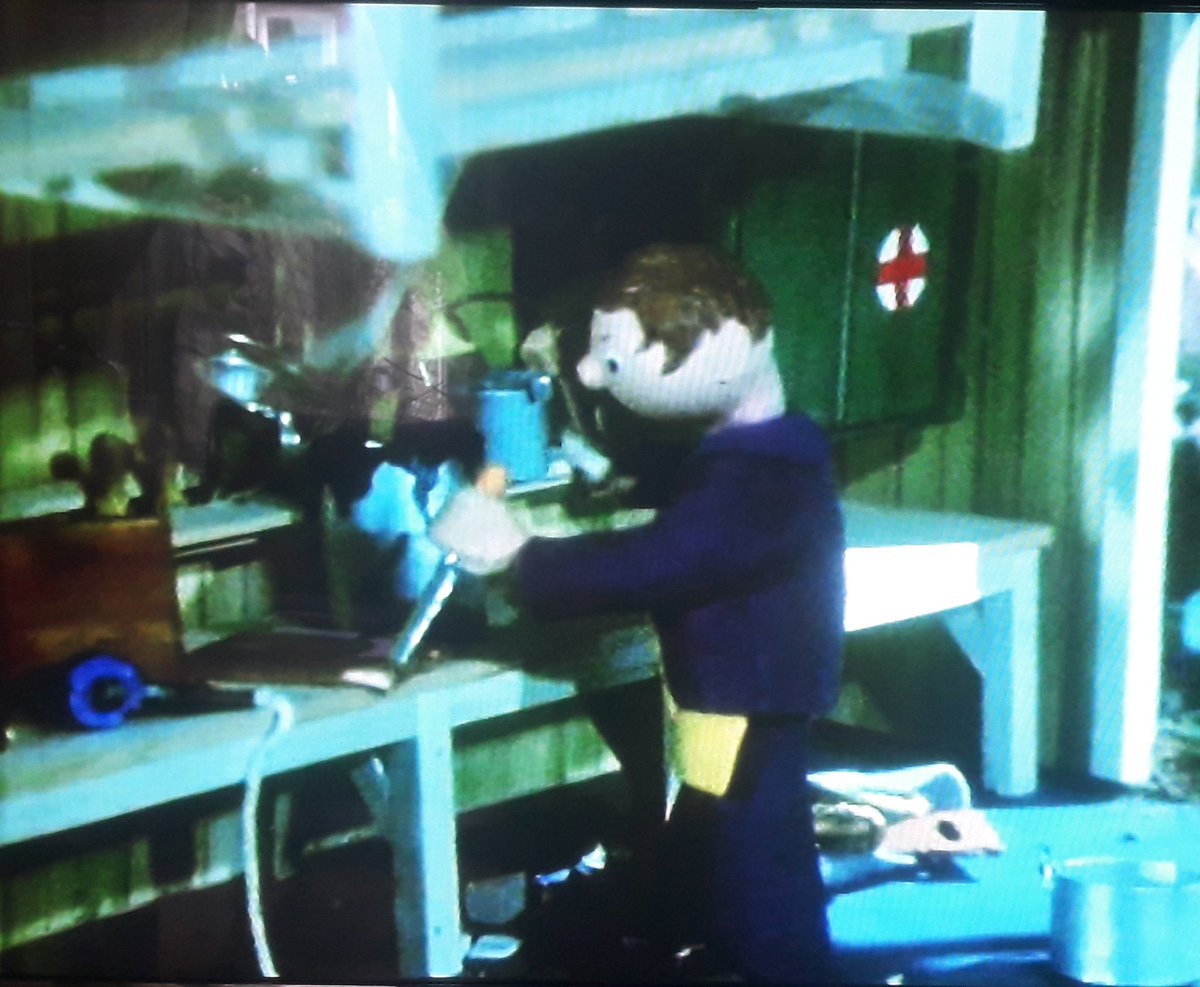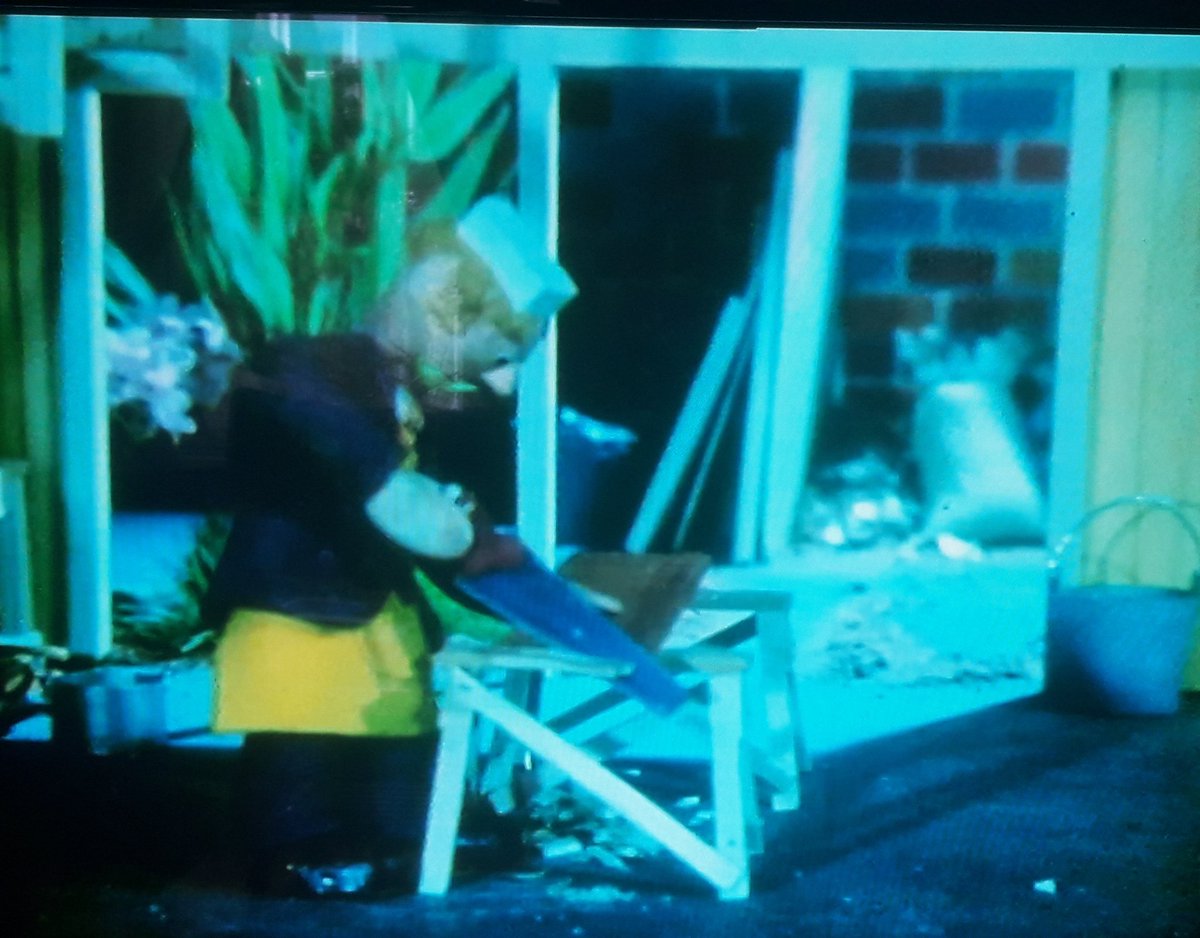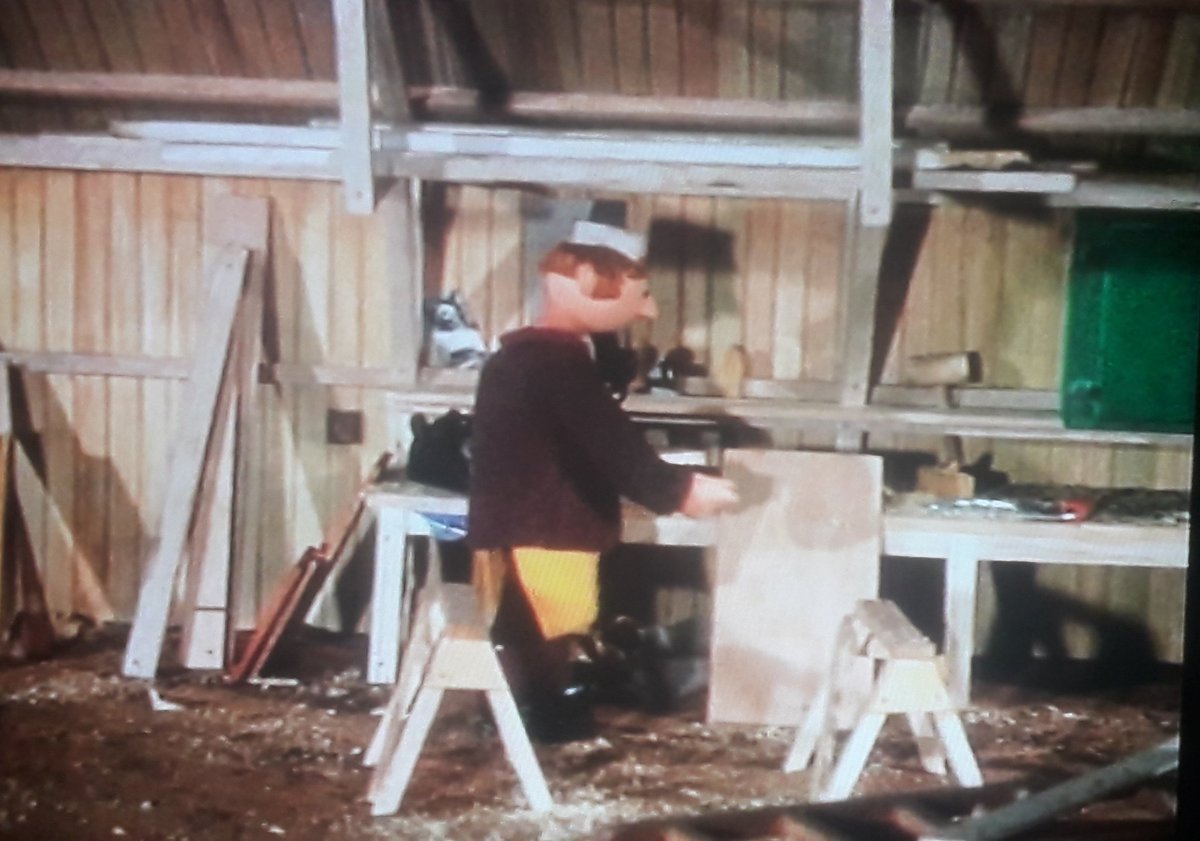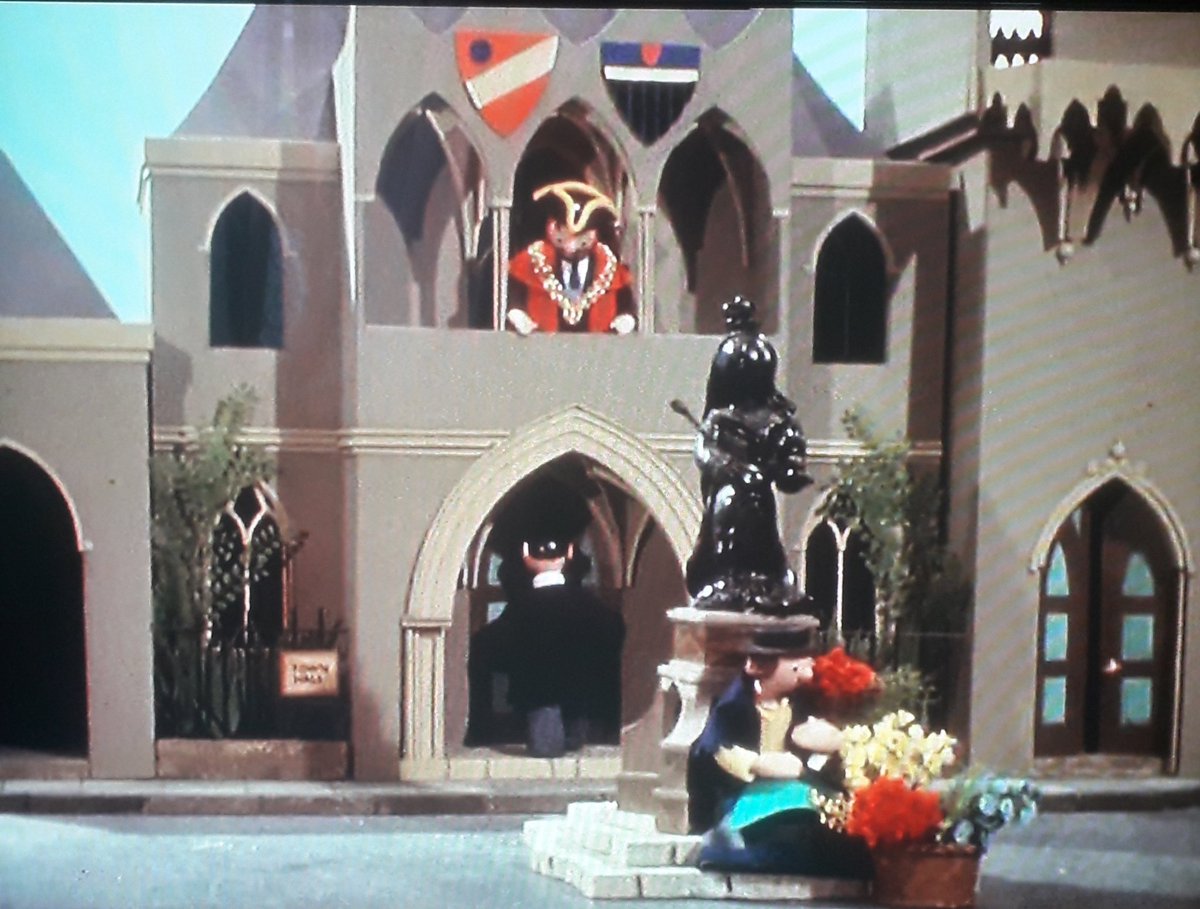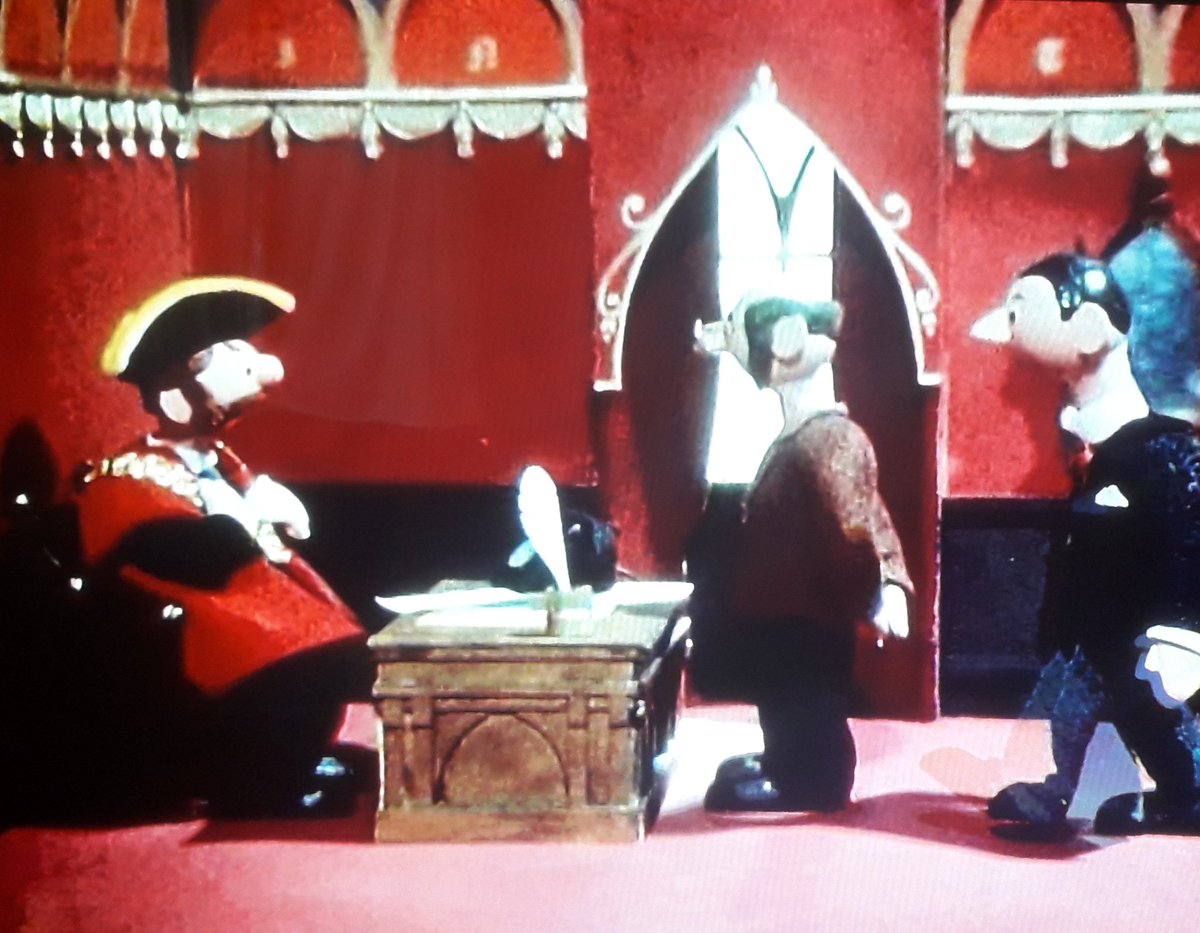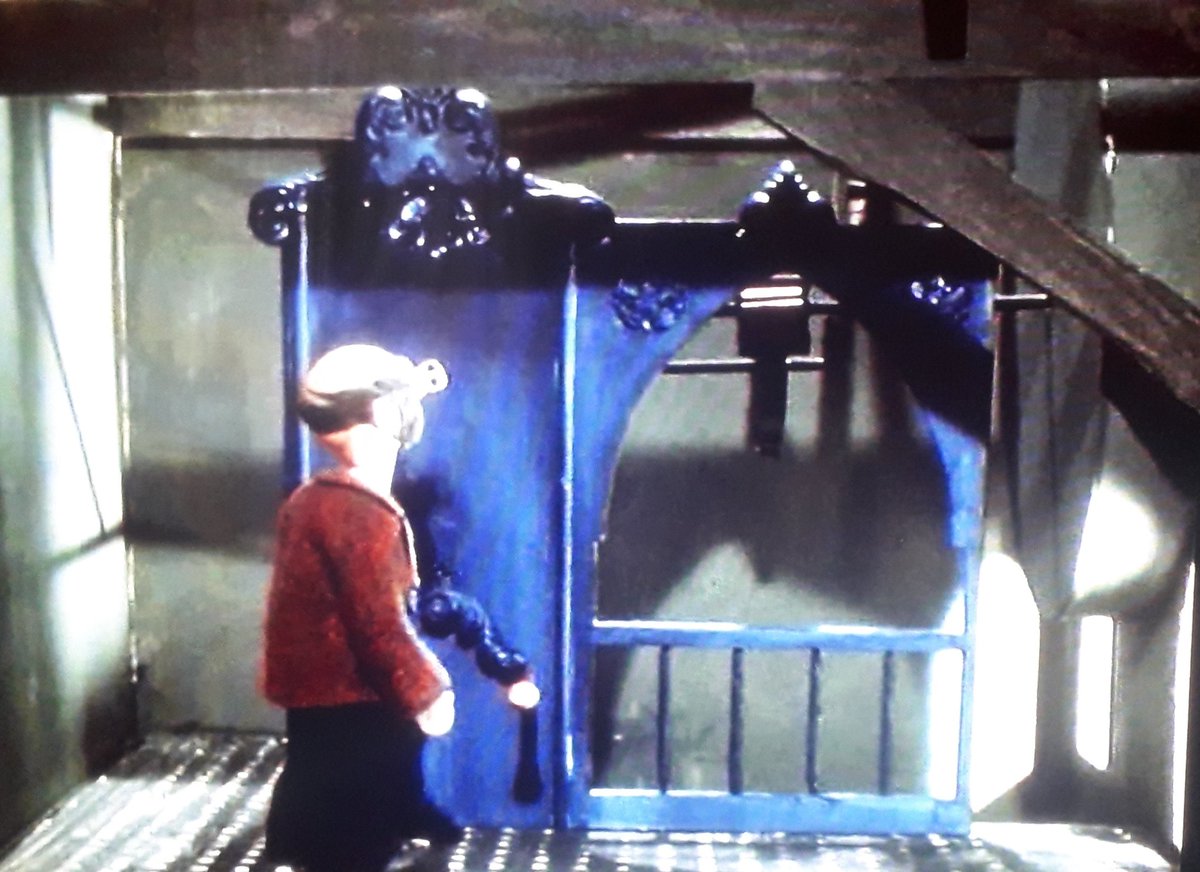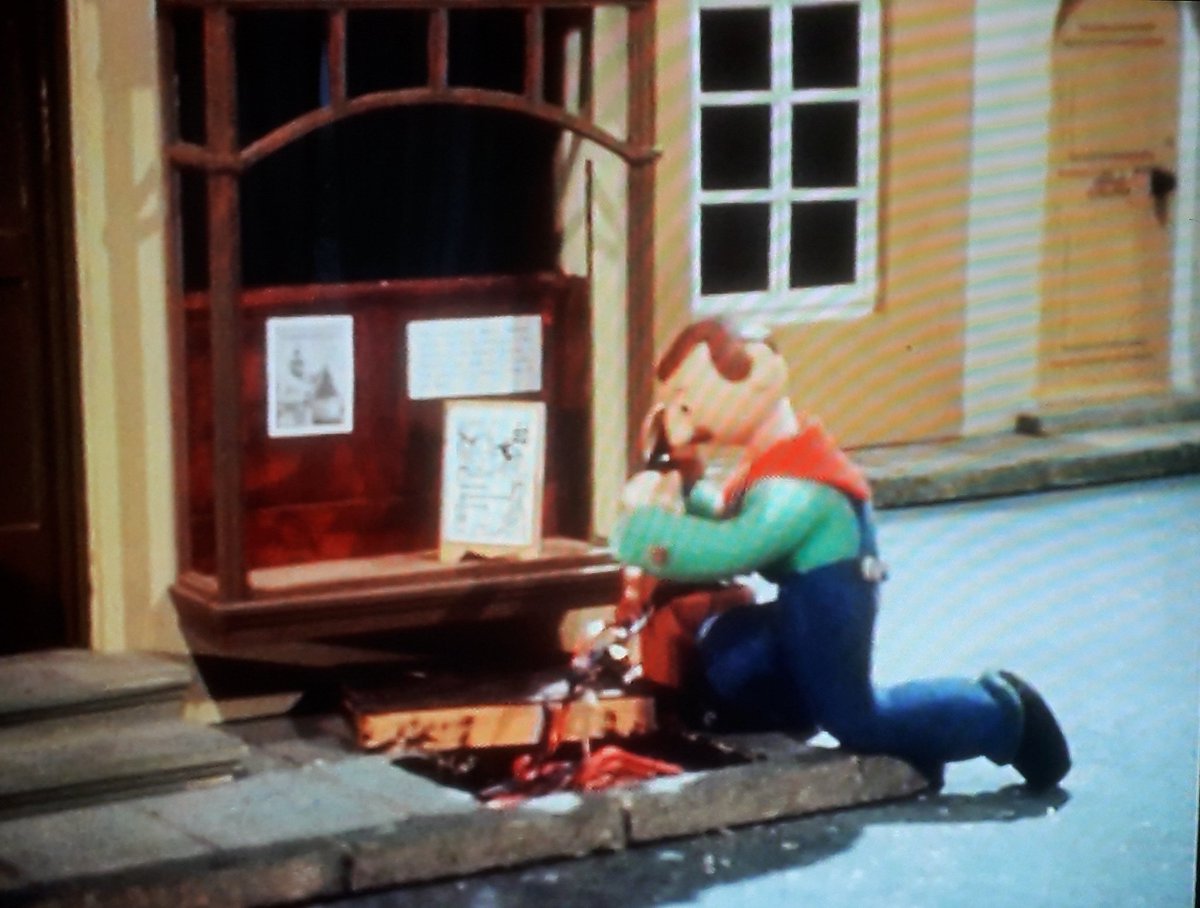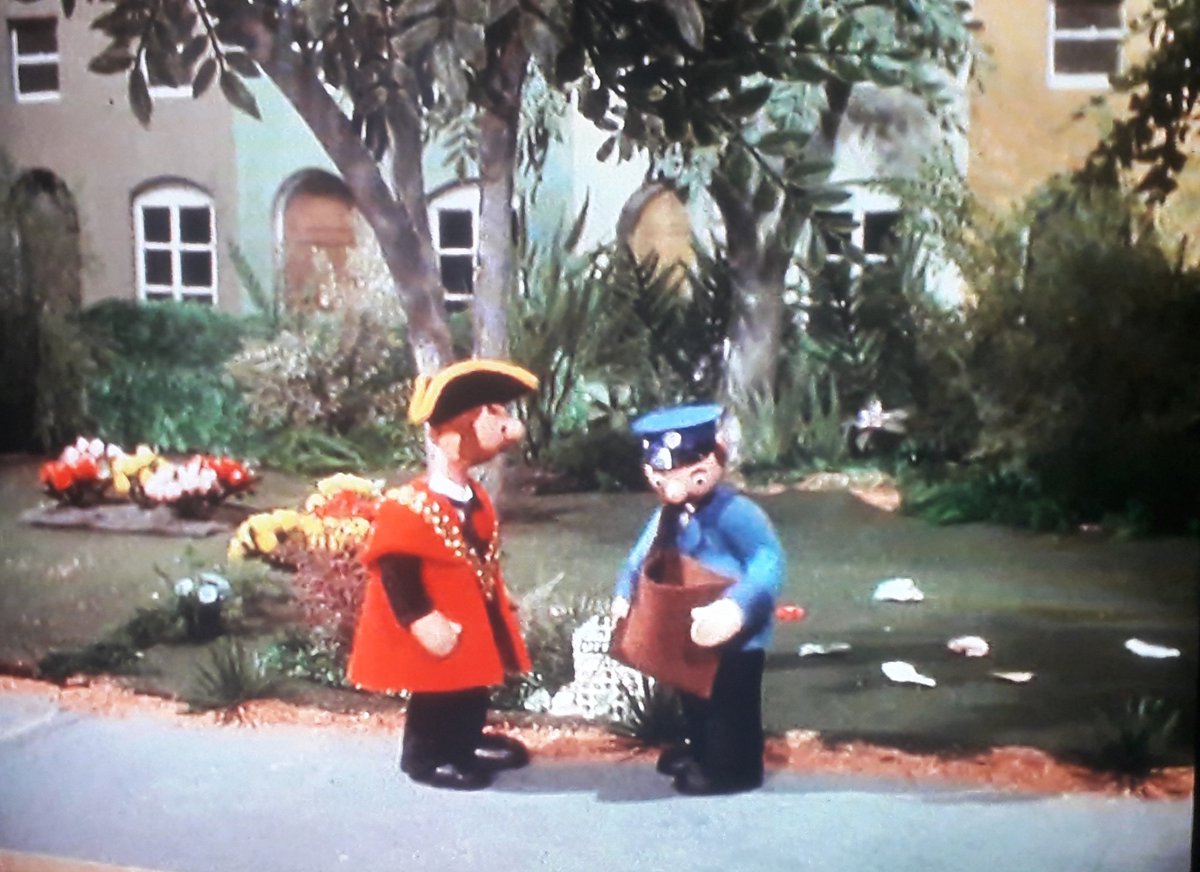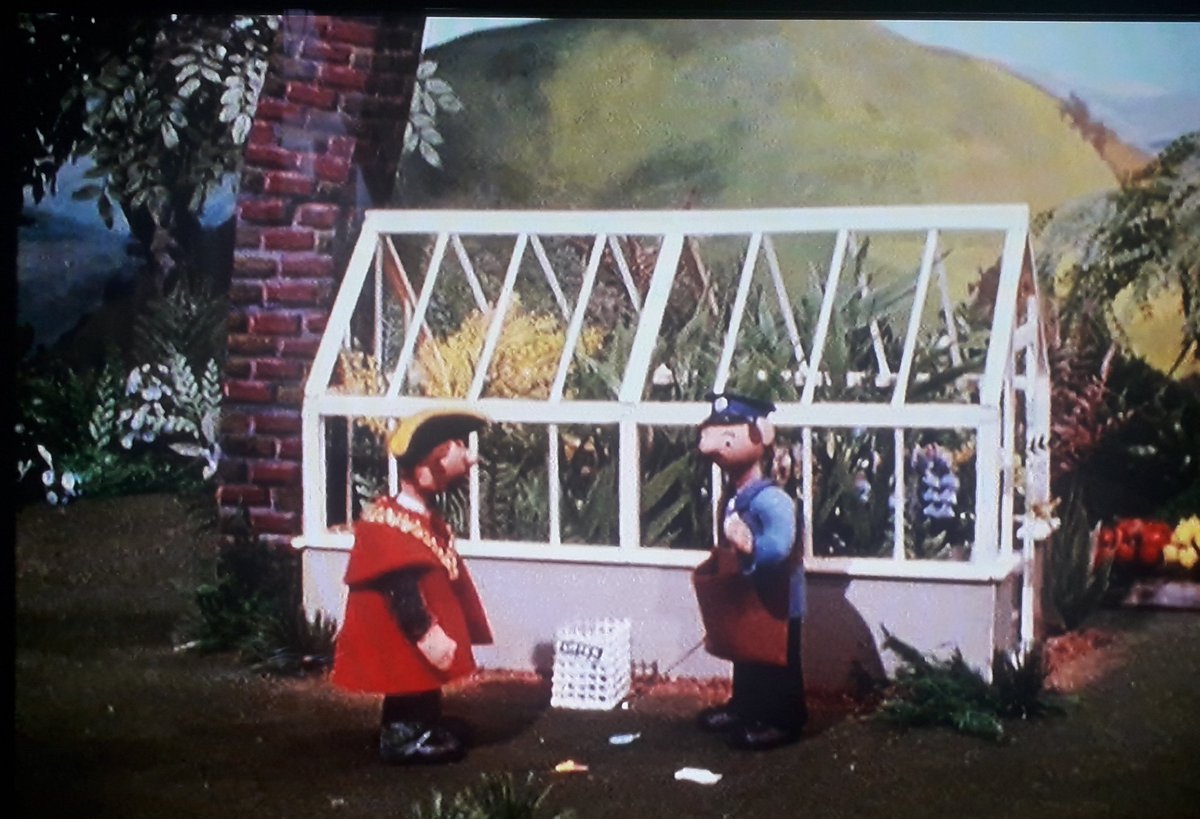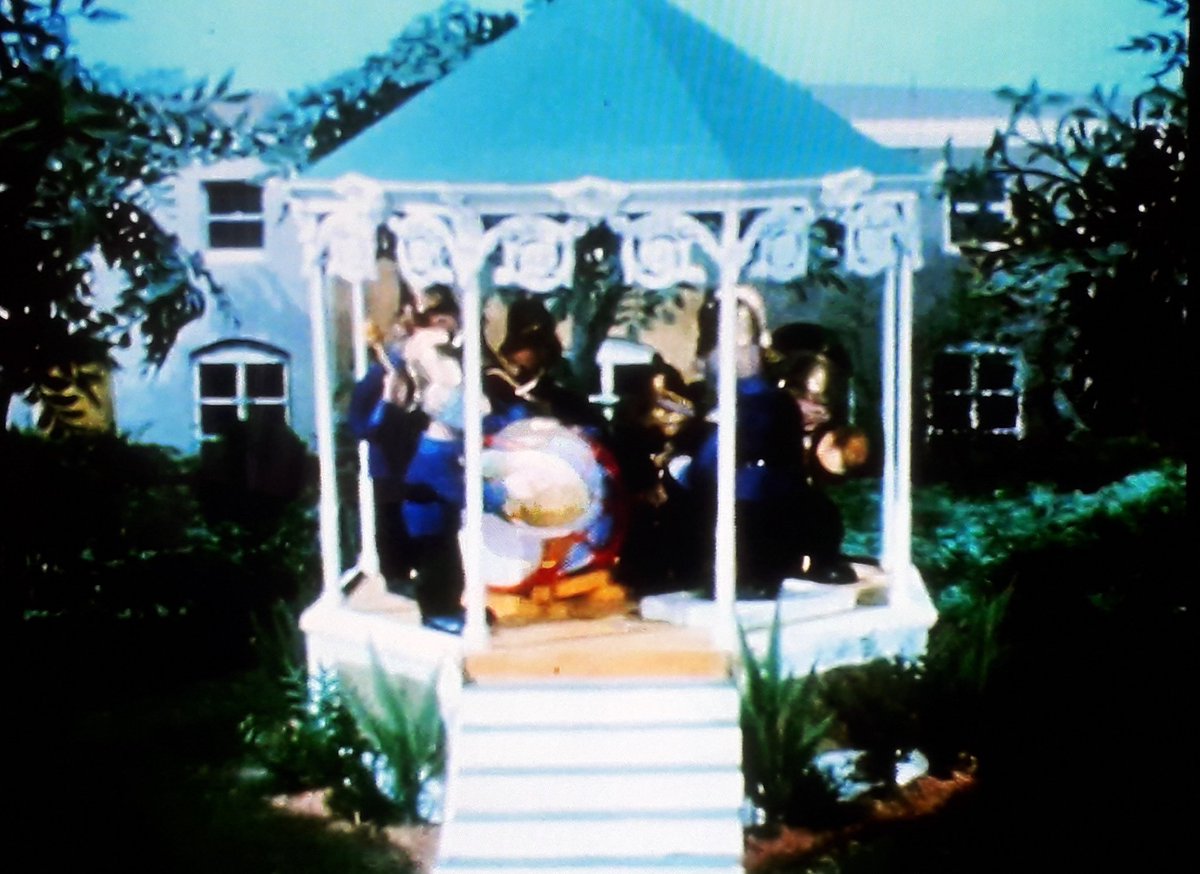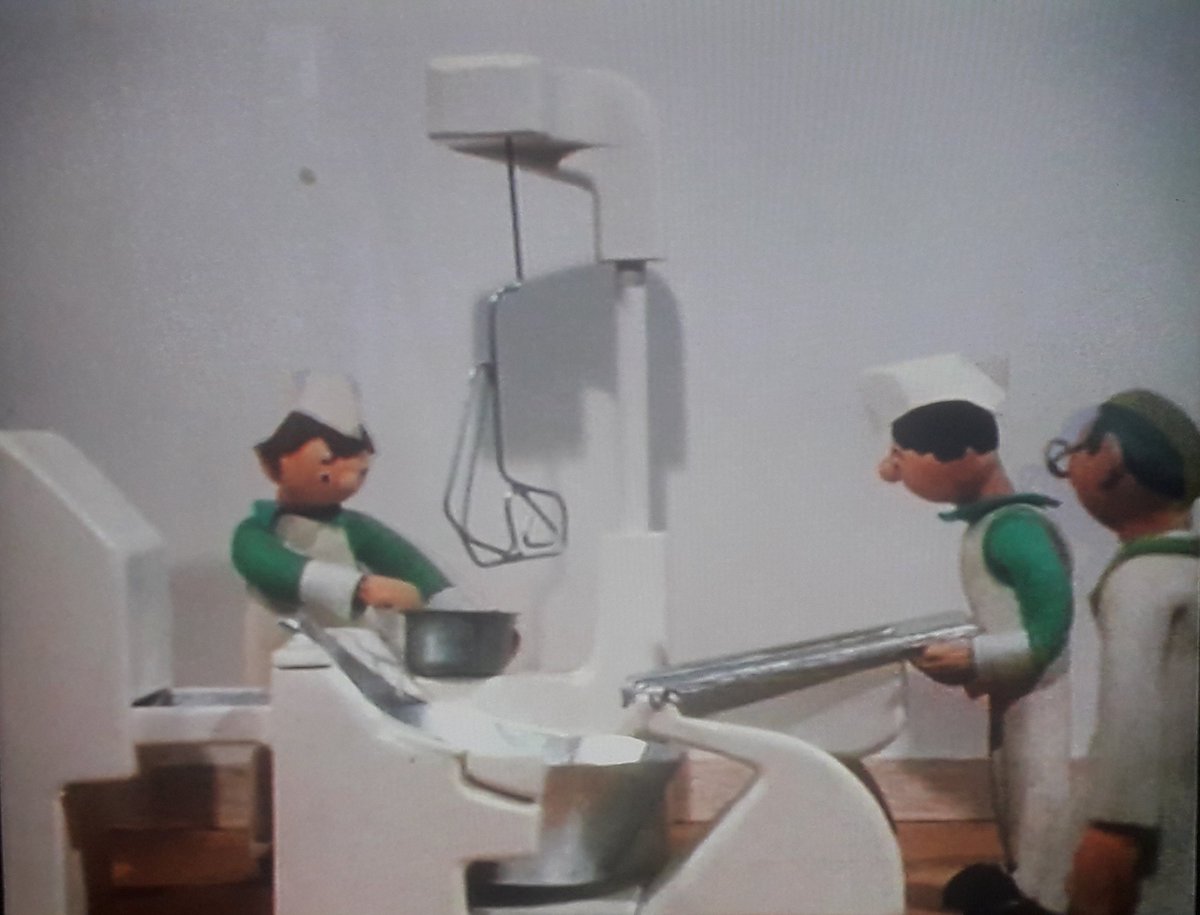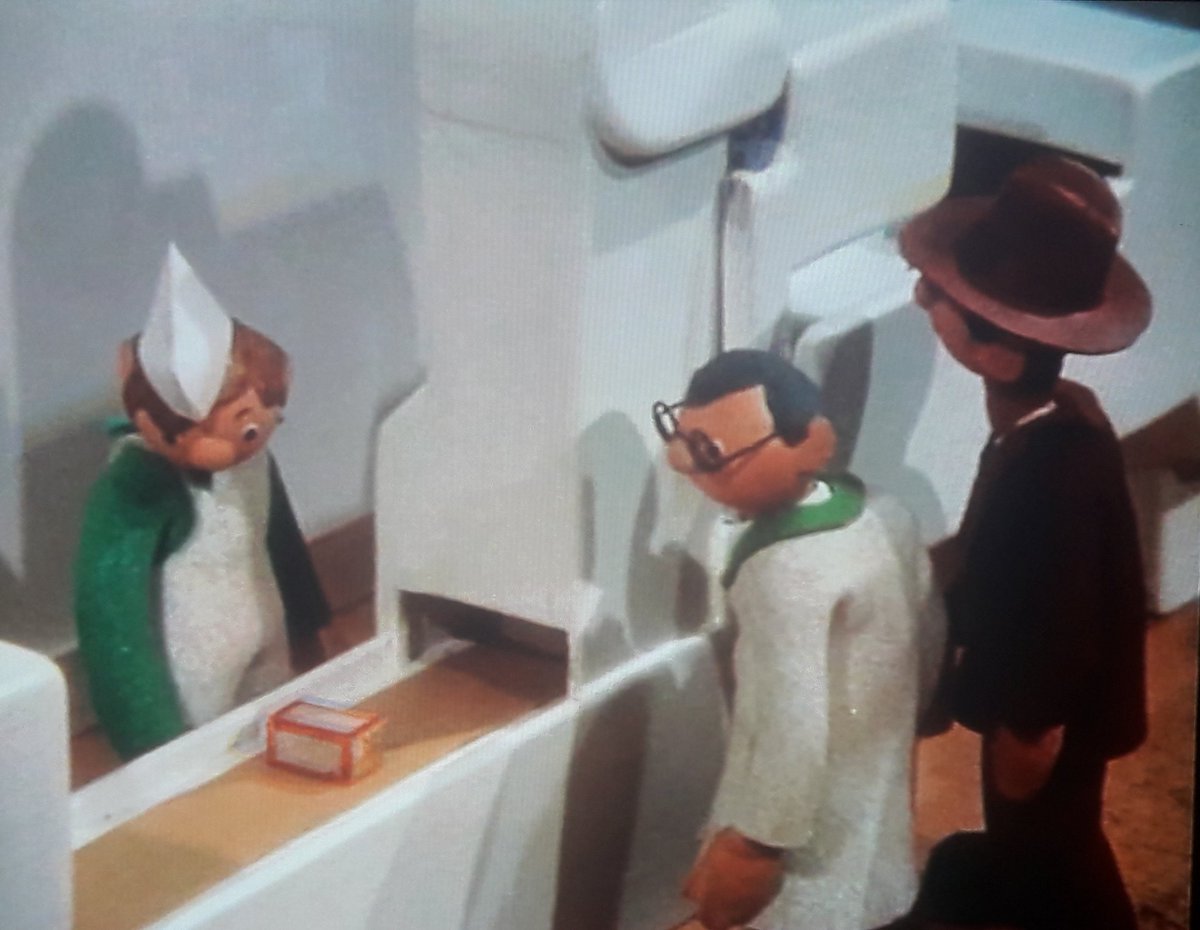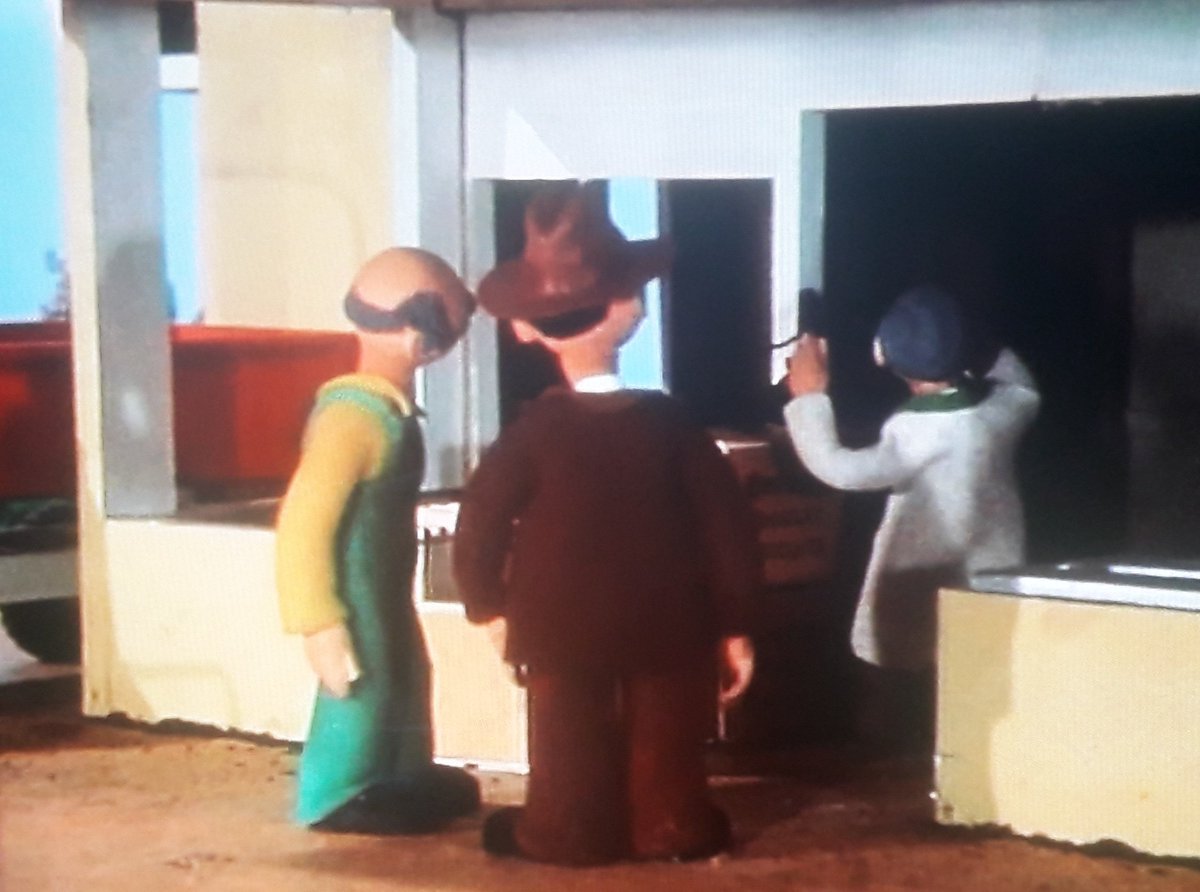An occasional look at some of the major - and lesser seen - buildings in Camberwick Green, Trumpton and Chigley, and some of their interiors too.
Sadly, we never find out what building the Clown and the Music Box are in.
Sadly, we never find out what building the Clown and the Music Box are in.
Mr. Crockett& #39;s Garage. A surprisingly modern brutalist effort, with a colour scheme suggesting it was last given a lick of paint in 1958.
Also a little-seen detail - this not especially good business slogan on the front of his booth. What font even is that??
Colley& #39;s Mill. Home of Windy Miller and Millers for generations before him, possibly unchanged in centuries. Though that perfunctory shed must be a more recent addition.
Dr. Mopp& #39;s Residential Surgery. A large Edwardian townhouse that chimes with his appearance and car, but is very out of step with the other buildings on the Village Green.
A rare glimpse of the interior of Dr. Mopp& #39;s house, suggesting a large open plan reception/surgery area, and calling to mind the front rooms described in Three Men In A Boat.
Mickey Murphy& #39;s Bakery. An old fashioned & #39;little shop& #39; of the sort that was still probably quite a common sight in the mid-sixties. But take a look at that upper storey...
This is, purportedly, one of presumably at least three rooms on that upper floor. It& #39;s about eight times the size of the entire bakery!!
Jonathan Bell& #39;s Modern Mechanical Farm. Exactly what the song suggests - an old farmhouse patched up and augmented to move with the times. As is much more obvious in close-up.
Thomas Tripp& #39;s Dairy. An ugly, squat block of concrete with a window forced into it against its will.
Pippin Fort. An outdated military training facility, obviously retained due to a strategic advantage of some sort. We don& #39;t really see inside, though, where they could have all manner of mod cons.
Inside the Modern Mechanical Farm. Suitably sparse and efficient, although I cannot vouch for the technical veracity of the machinery.
Roger Varley& #39;s Cottage. Nicely shabby look, especially on the battered front door, which is presumably deliberately in line with his character.
We don& #39;t often see much more than the very edge of it at the very edge of the frame, but here& #39;s the well at Colley& #39;s Mill in all its, um, glory.
A rare glimpse inside Pippin Fort, which - party trimmings aside - seems suitably spartan. Although, oddly, their telephone is up on the battlements.
Mr Carraway& #39;s Fishmongers. Essentially a glorified market stall with some very unsteady wallpaper. Were pull-down shutters still a novelty in the mid-sixties?
The interior of the Bakery. Unlike that cavernous upper storey, it actually appears roughly in accord with the exterior dimensions, and pleasingly hygenic too.
Our only glimpse round the back of the Bakery. Or is it Roger Varley& #39;s Cottage slightly repainted??
So what *is* inside Windy Miller& #39;s shed? An old-fashioned bakehouse, where he apparently makes bread and cakes.
The Post Office. Another quaint little Village Shop type affair, and there were doubtless still Post Offices that looked like this around in the early sixties.
The Post Office Interior. Possibly because it was made for the first episode, and is the most seen throughout the series, it& #39;s the most well-appointed interior by far. The detail is astonishing; even the letters are properly addressed.
Also, take a look at the decorations on the counter - made by the same woodworker as the Music Box??
Finally, a quick look at the Green itself. We& #39;ve seen the surrounding shops and houses, but not the spectacular central tree (actually a plot device in one episode, as well as the venue for the worst game of hide and seek ever), or the adjoining walls.
Well, that& #39;s the lot for Camberwick Green, but soon it& #39;ll be, well, time to move on to somewhere else...
Right, let& #39;s move on... steadily, sensibly, never too quickly, never too slowly... to Trumpton!
Camberwick Green& #39;s design is mostly rooted in the recent past, with Mr..Dagenham& #39;s sports car and Farmer Bell& #39;s machinery being the only real nods to mid-sixties modernity. With Trumpton, it& #39;s very much a sense of a town that& #39;s moved with the times...
There& #39;s a lot of the Town Square to look at in more detail, but how fantastic is the full view? It looks fit to burst into activity. Which of course it does...
A rare full close-up view of the statue of Queen Victoria, from the episode where Mrs. Cobbitt didn& #39;t turn up.
I don& #39;t think they& #39;re planning to pull it down.
I don& #39;t think they& #39;re planning to pull it down.
Mr. Munnings& #39; Print Shop. A huge contrast to some of the other businesses we& #39;ll be seeing, with a minimal look not unlike the newer businesses finding their way into the lower floors of Fleet Street in the early sixties.
Inside, it& #39;s suitably like a business that has found its way into a space rather than the other way around. Tons of equipment, arranged for convenience rather than aesthetics.
While we& #39;re about it, let& #39;s have a closer look at that amazing printing press. Still looks impressive even now.
The Fire Station. Looks very, very similar to how Fire Stations really did look around then, and those big clanging doors actually looked and sounded heavy. Also note that colourful wall next to it, subtly cementing it as part of a bustling residential area.
We never really get to see inside the Fire Station, sadly, other than occasional glimpses of Captain Flack& #39;s office. Which apparently only contains a red desk, a telephone and a light-up map of, erm, Florence.
We only get to see round the side of the Fire Station once, as part of the comically ill-fated attempt to put up their own adverts for the Band Concerts. It gives you a sense of how *massive* the set is though. It does fit the whole Fire Engine after all.
Meanwhile, on the side of an unidentified building, Trumpton& #39;s only advertising hoarding. Note the adverts for Mr. Crockett from Camberwick Green, Harry Farthing from Chigley, the Flower Show from the elusive Trumpton Flashy Flickers film, and & #39;France& #39;.
"...and all the houses look the same", as Blur once sang on an album that wasn& #39;t a million miles away from Trumpton in some respects.
They do, but how strikingly like a real street do they look? Especially with the subtly different colours.
They do, but how strikingly like a real street do they look? Especially with the subtly different colours.
Miss Lovelace& #39;s Hat Shop. Quite an unusual building in that it looks like a more modern construction with an older-fashioned frontage built into it. She always came across as a bit of a pseud, though.
A closer look at that boutique-style exterior, and the plush arrangements in the window displays. You can& #39;t say this isn& #39;t a shop with character.
Inside, it& #39;s exactly how you would expect a mid-sixties designer emporium to look. Not quite sure Mr. Dagenham would be dropping by for a new three-button suit, mind.
Not strictly a *building* as such, but it& #39;s worth giving a mention to Mr. Antonio& #39;s Ice Cream Van, mainly on account of the fact that it looks alarmingly like something out of The Prisoner.
Mr. Platt& #39;s Clockmakers. Deceptively bland from the outside, but...
...inside it& #39;s a riot of clocks - who didn& #39;t want that elephant one? - with old-fashioned wallpaper and battered woodwork that suggest he& #39;s more focused on his craft than his surroundings.
The only time we ever really see the top of one of the buildings - when Mr. Robinson has a look at Miss Lovelace& #39;s chimney. That street lamp is a beautiful detail.
Mr. Clamp& #39;s Greengrocers. We never really see inside but the slightly will-this-do facade built onto the front of an existing shop is a brilliantly authentic detail.
This is the closest that we get to a look inside Mr. Clamp& #39;s shop, which suggests that it was really just all one big storeroom...
The only time we see round the back of one of the buildings in the Town Square - Mr. Platt& #39;s Pigeon Loft, in a yard complete with authentically sloping wall.
Chippy Minton& #39;s Bungalow and Workshop, directly adjoining Mrs. Cobbitt& #39;s, which you can also see here with alarmingly realistic roof damage caused by a falling branch. Note the larger houses on the Trumpton streets in the background.
Not really architecture as such, but adjacent to the Mintons& #39; house is this lovely view - so lovely, in fact, that a passing artist decided to paint it whilst a rarely-glimpsed Trumptonshire Blue Rabbit looked on.
Inside their actual house - quite appropriately given how rattled Chippy gets about Dora having his tea ready - there seems to be little bar a few cooking implements and a telephone. It looks nice and airy though.
We get a few more glimpses inside Chippy& #39;s workshop - another that appears bigger than the outside would suggest - and it& #39;s impressively makeshift and cluttered with carpentry-related tools and debris, and even a first aid kit. But there& #39;s a very strange hidden detail...
It may well be in keeping with his boorish proto-Leave character, but you really wouldn& #39;t expect to find swimwear model & #39;lovelies& #39; up on Chippy Minton& #39;s workshop wall. Yet there they are.
We& #39;ve already seen the clock, but what about the Town Hall itself? It& #39;s a beautifully designed set, calling to mind the sort of Town Hall you& #39;d have seen on holiday in a coastal town you& #39;d never heard of, and we get to see much more of the interior than you& #39;d expect.
The Mayor& #39;s Office. Done out in red baize and gilt trimmings with an old-fashioned desk. The sort of place you& #39;d feel simultaneously comfortable and intimidated in. You can almost smell the wax seals on the envelopes.
Behind the clock face, a mysteriously Tardis-like winding mechanism. It& #39;s difficult to evaluate the technical accuracy, but it was always thrilling when Mr. Platt went back there.
The Loft. The least glamorous part of the Town Hall, although not without mystery - if the water tank was too big to get out, how did it get in there in the first place?
Pausing only to see some impressively realistic digging up of the impressively realistic pavements, there& #39;s only one location left in Trumpton, and it& #39;s a *massive* one...
Trumpton Town Park is what should be an award-winning example of municipal planning. Tidy, orderly and well equipped, and we get to see a lot of it. Here& #39;s The Mayor and Mr Craddock picking up litter and inspecting a broken bench. Bin and flowers both superb attention to detail.
The Park also boasts a meticulously maintained duck pond, as visited here by The Mayor and Cuthbert (who inevitably fell in).
Mr Craddock& #39;s maintenance shed - about to be used here by Raggy Dan as a temporary repository for, well, rags, bottles and bones - is a suitably dull and functional affair, with a roof weirdly longer on one side than the other.
It& #39;s not all as modern and updated as it should be, though, as brilliantly illustrated by the contrast between the modern lightweight greenhouse and the ageing crumbling brickwork chimney about to topple and wreck it. The Fire Brigade save the day, though, and then...
The Bandstand. A wrought iron affair given a modern lick of paint but staying as rooted in the past as much as it moves with the times. And isn& #39;t that just Trumpton all over.
And with a rare glimpse of the vacated bandstand, and The Mayor& #39;s impressive car (and suspiciously named chauffeur Philby), that& #39;s it for Trumpton. No prizes for guessing where we& #39;re headed next...
Chigley was the part of the county given over to light industry, and it didn& #39;t get more lightly industrial than Creswell& #39;s Chigley Biscuits and their staggering modernist factory complete with standard issue incomprehensible aerial thing on the roof.
Inside the Biscuit Factory, it& #39;s all very clean and clinical and, well, efficient, with the sort of bare walls and gleaming white machinery you might have seen in a James Bond film or Willy Wonka And The Chocolate Factory. Or even - a lomtick - A Clockwork Orange.
We don& #39;t get to see too much more of the Biscuit Factory, though there are a couple of glimpses of the loading bay in operation, and how brilliantly of its time is that clock? Not too dissimilar to the Play School Clock in fact...

 Read on Twitter
Read on Twitter